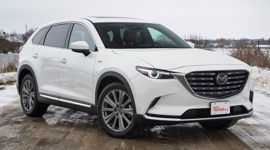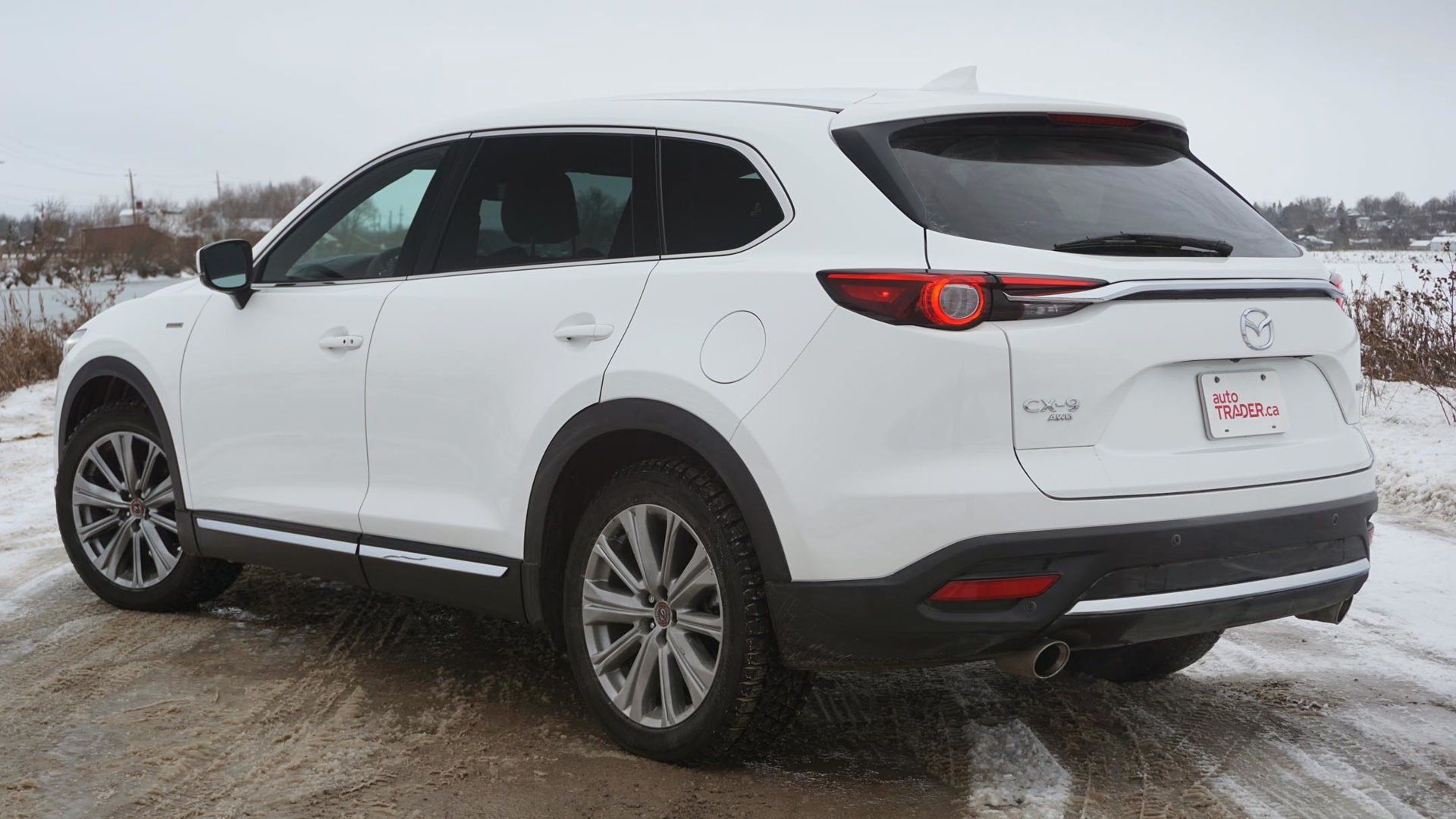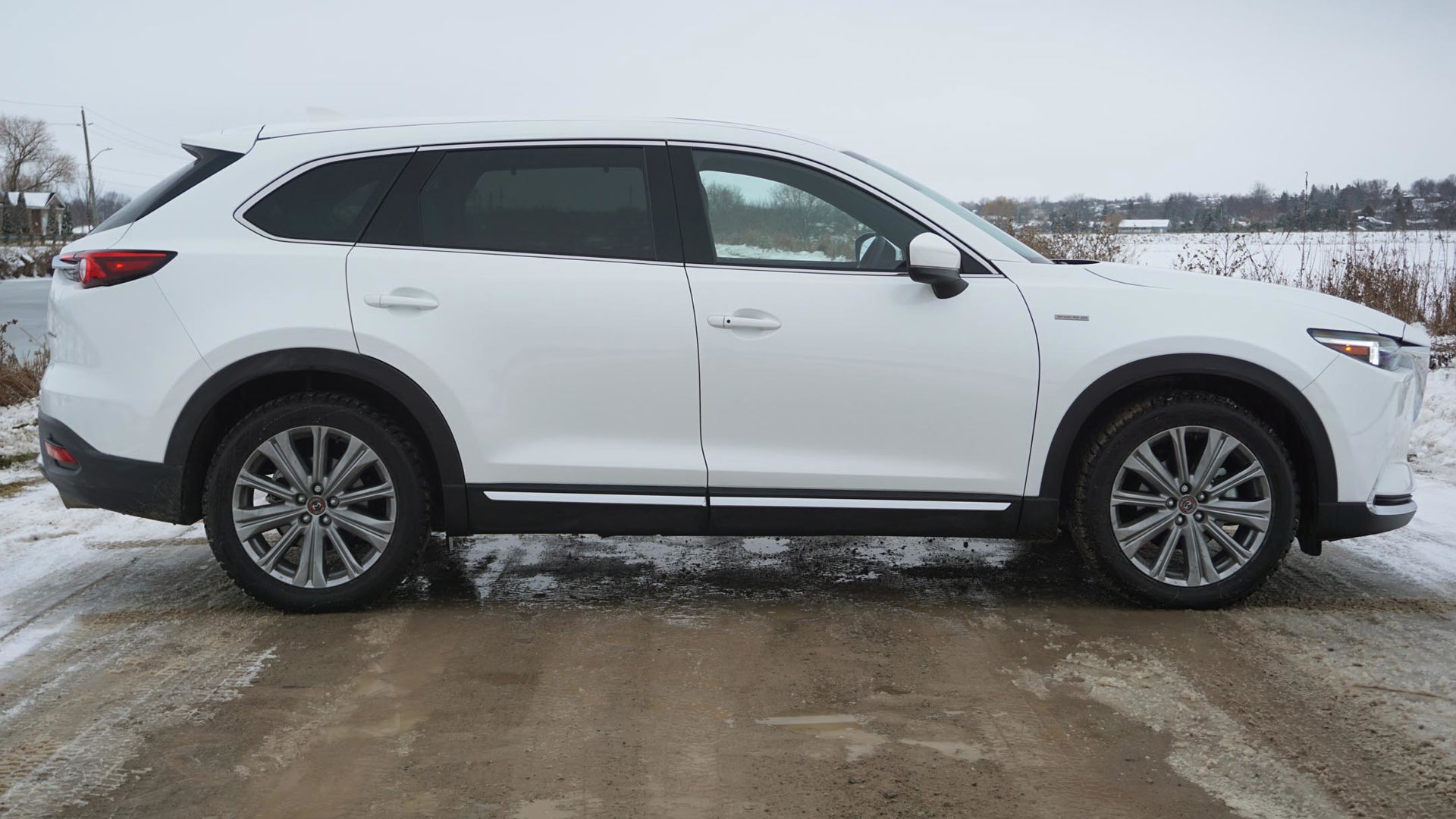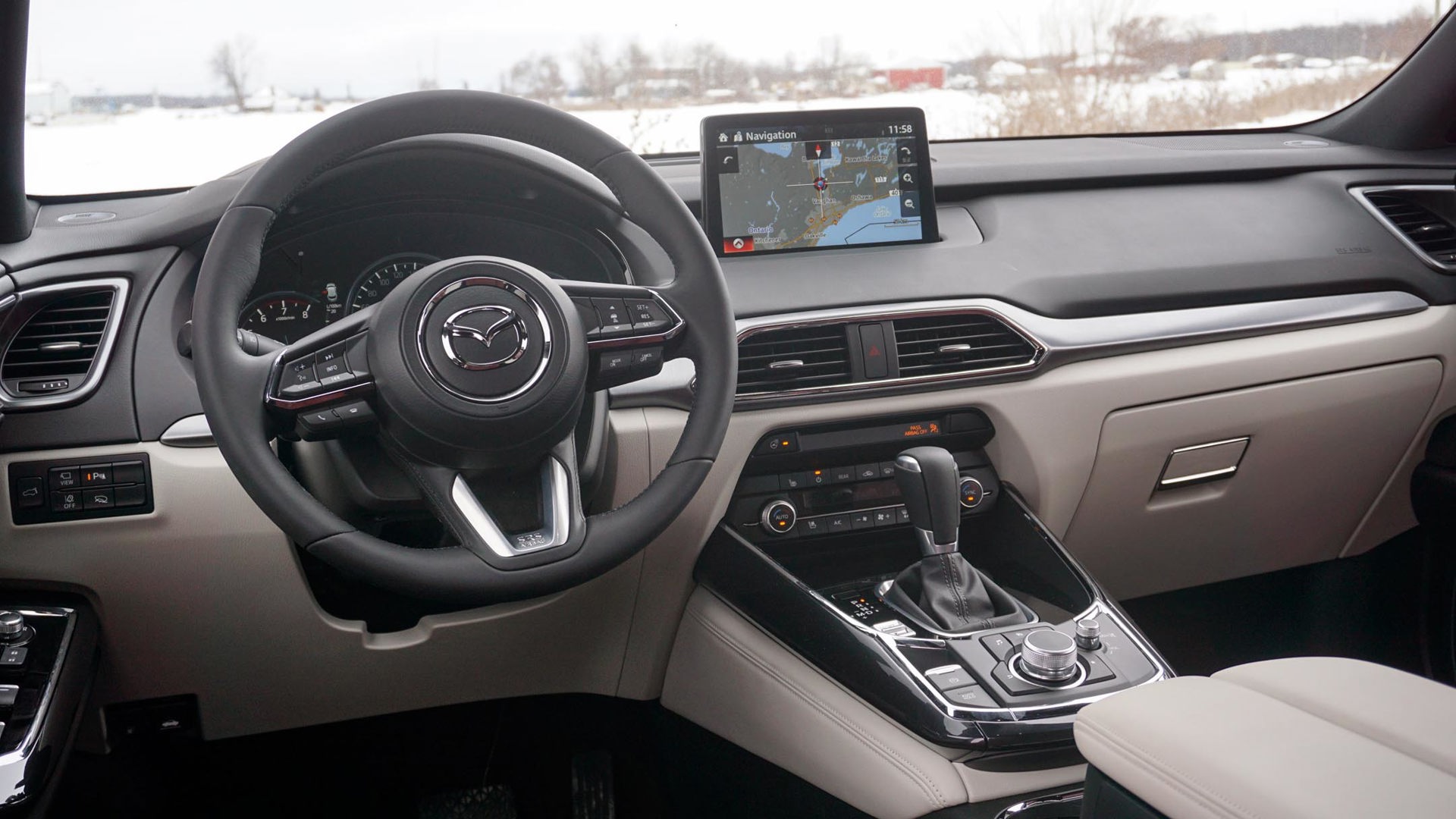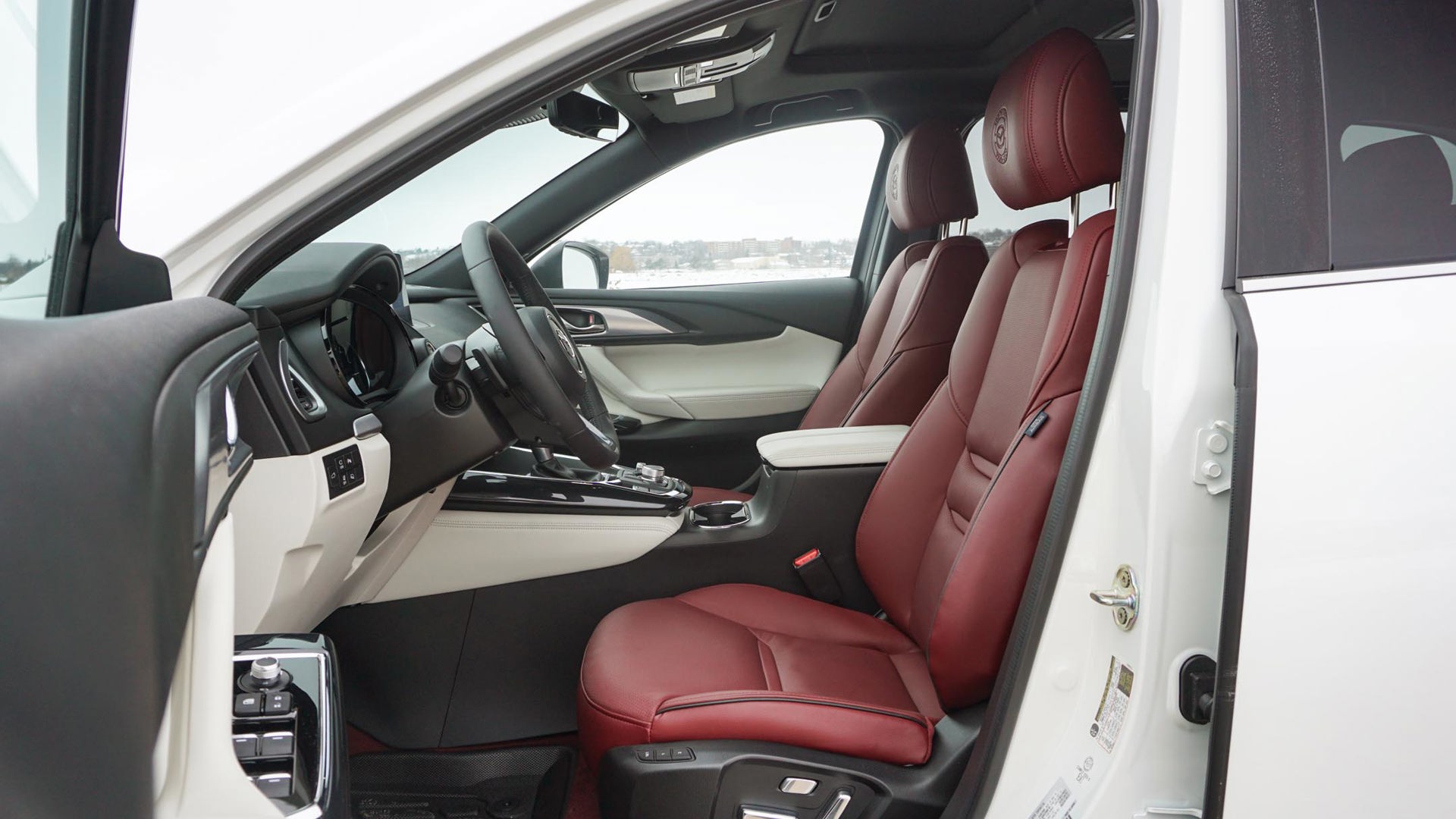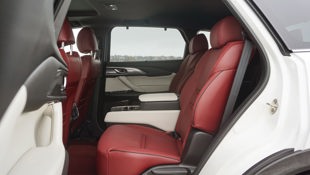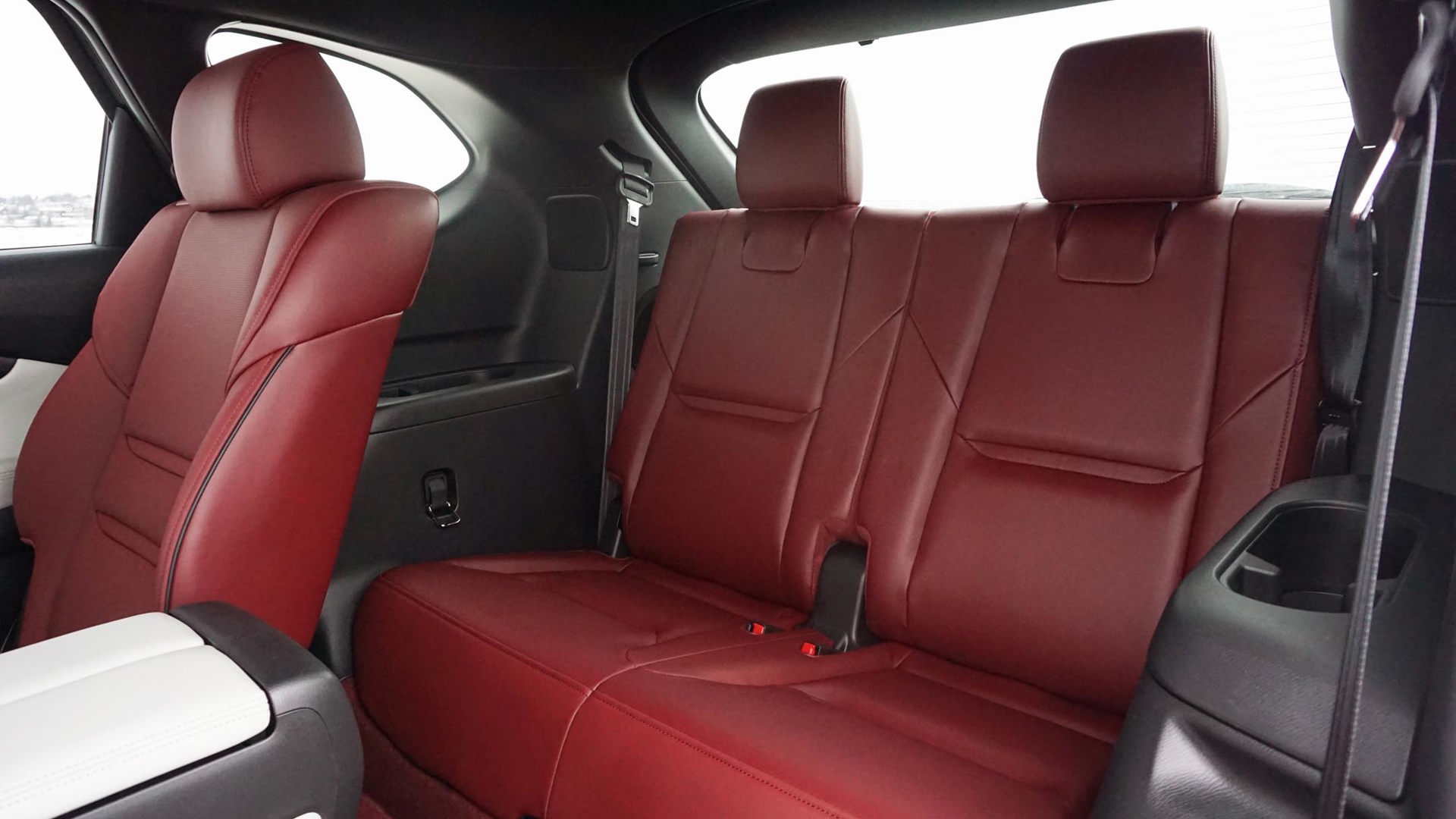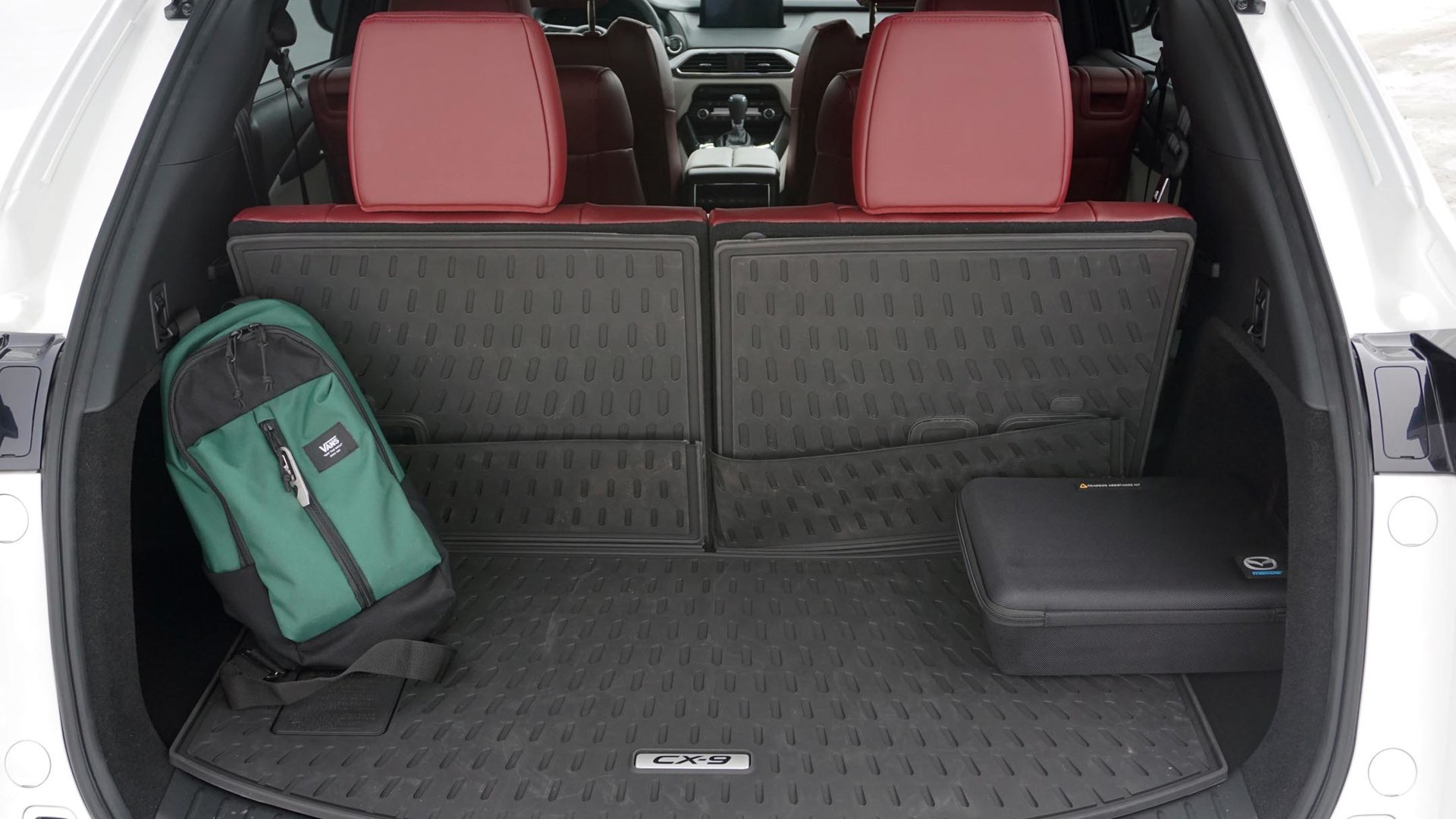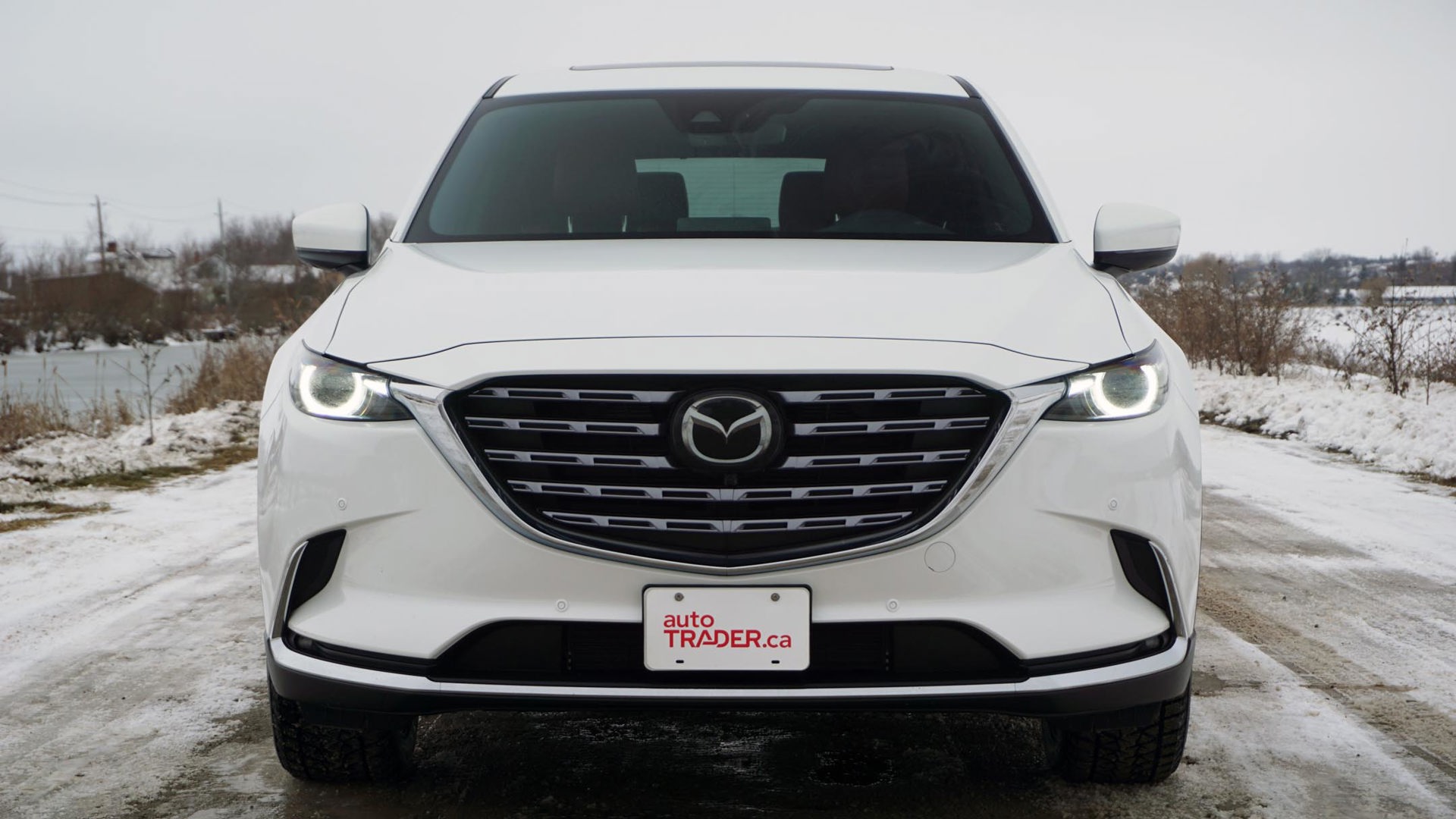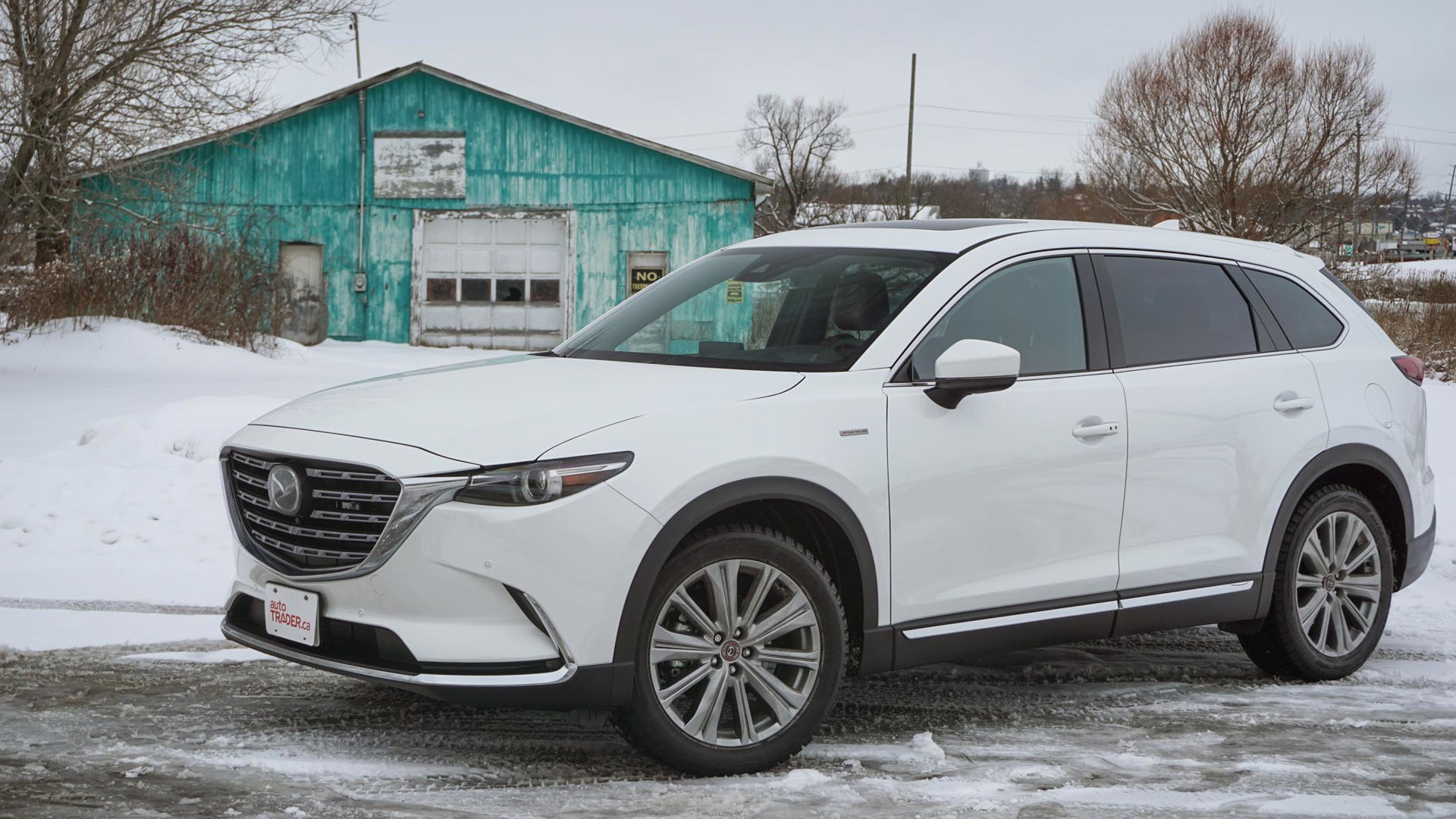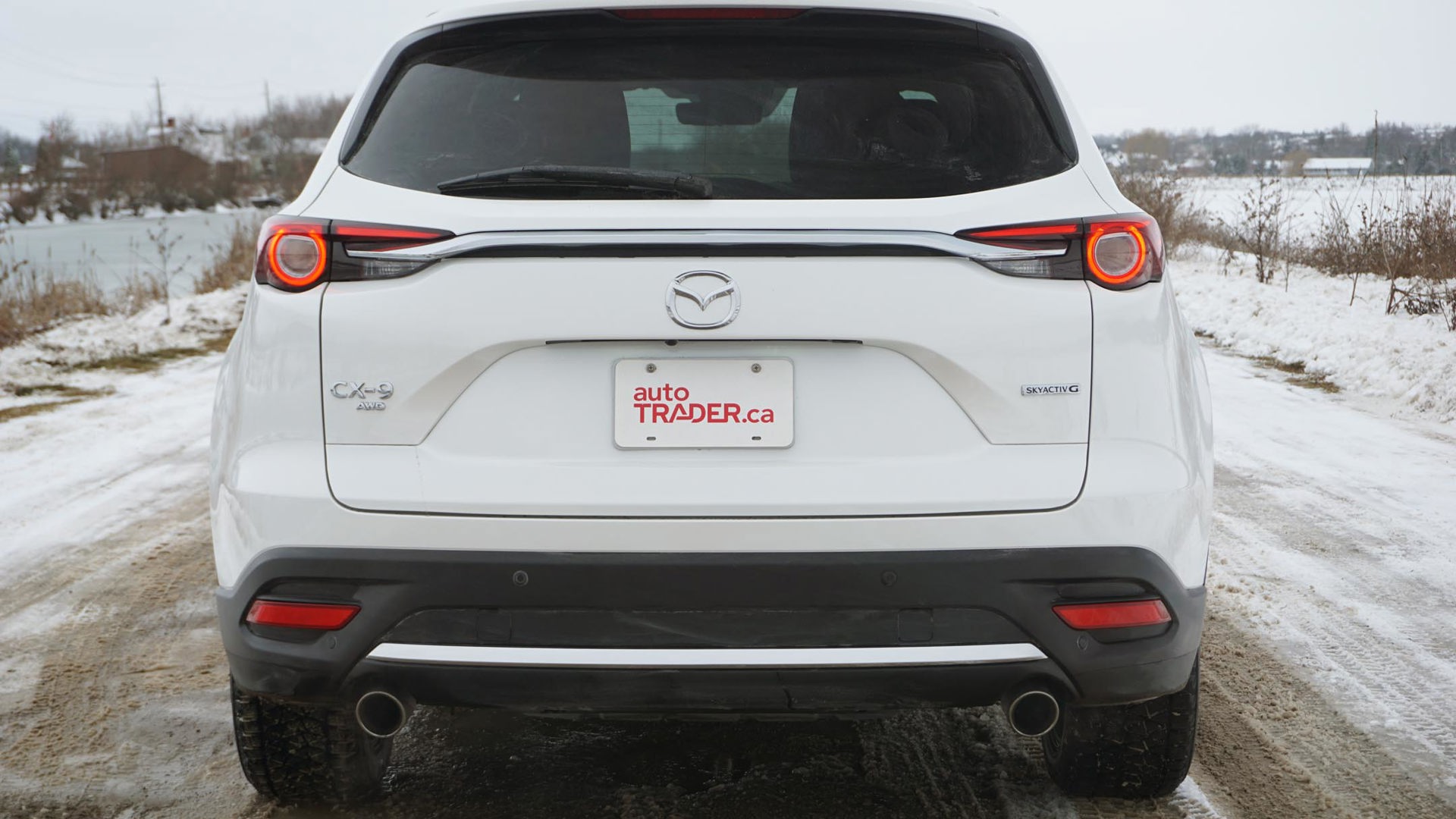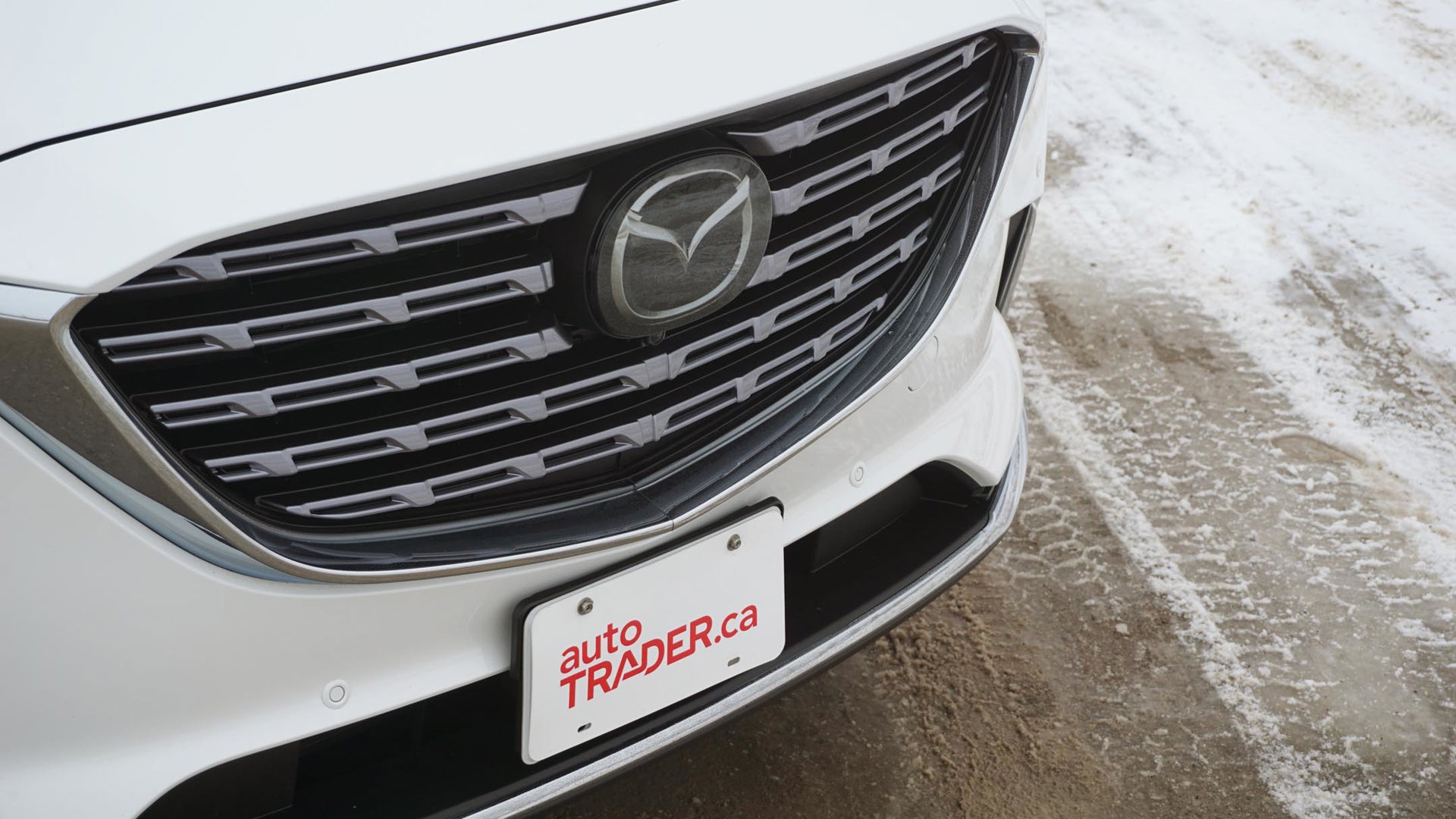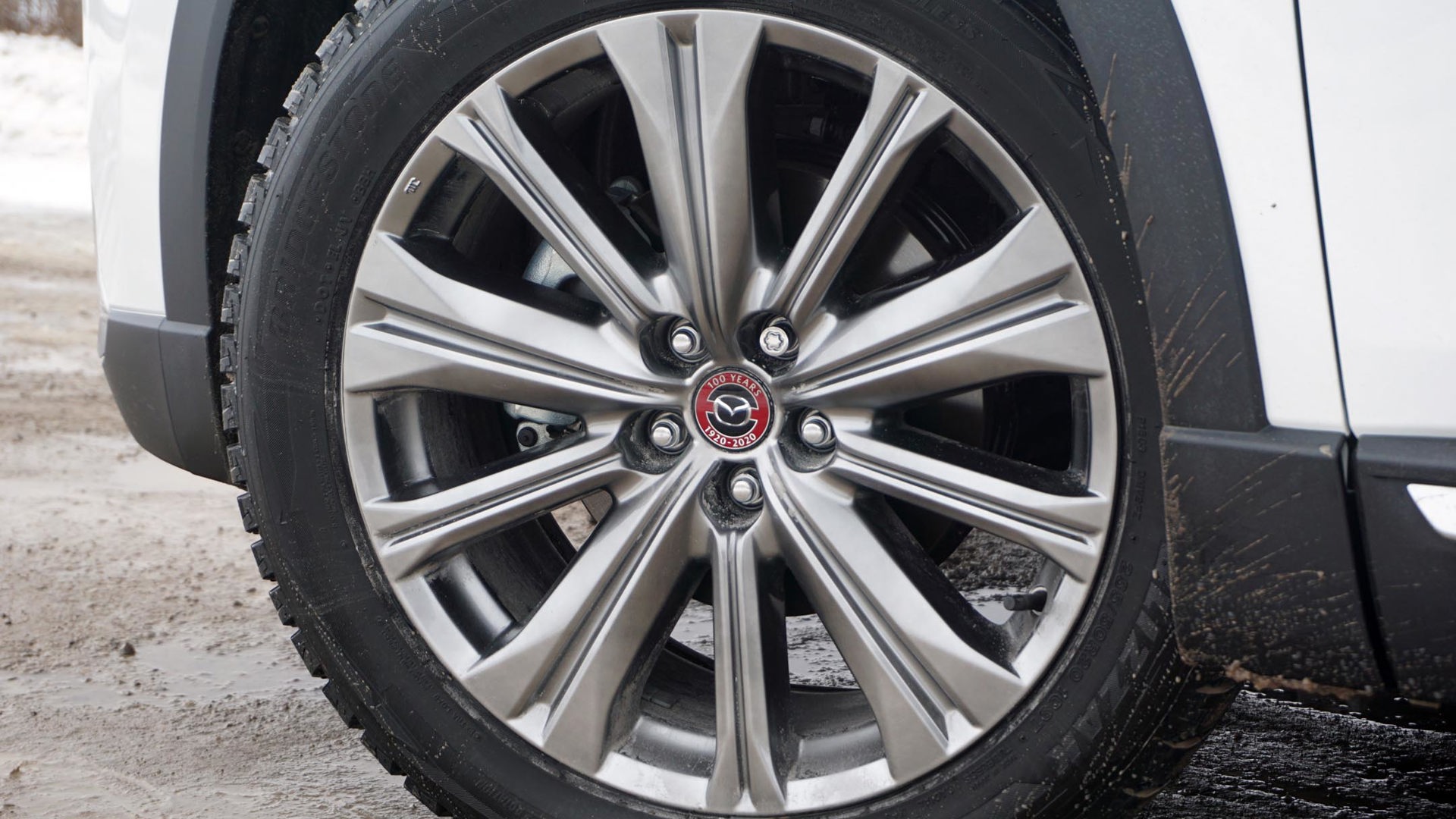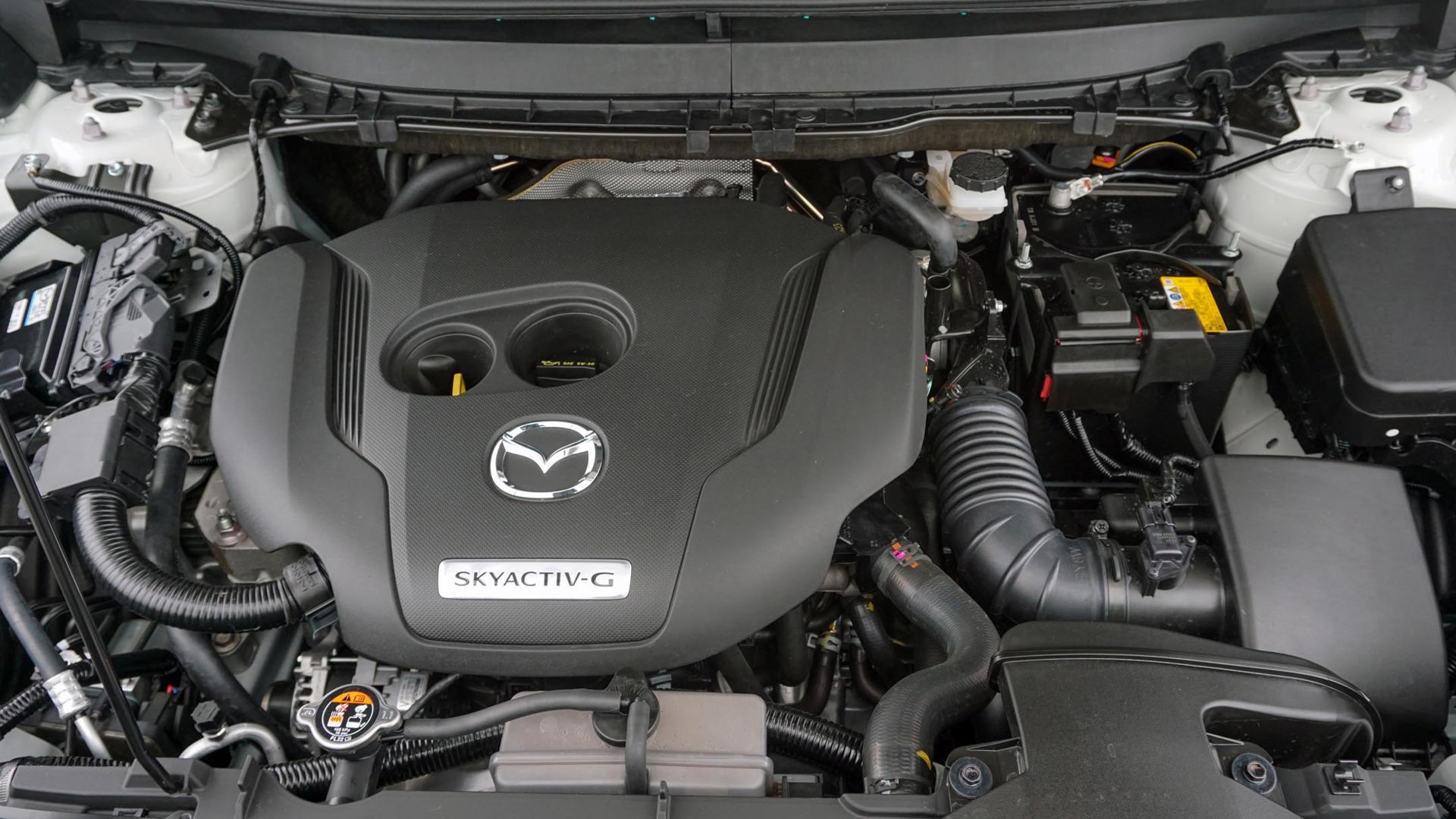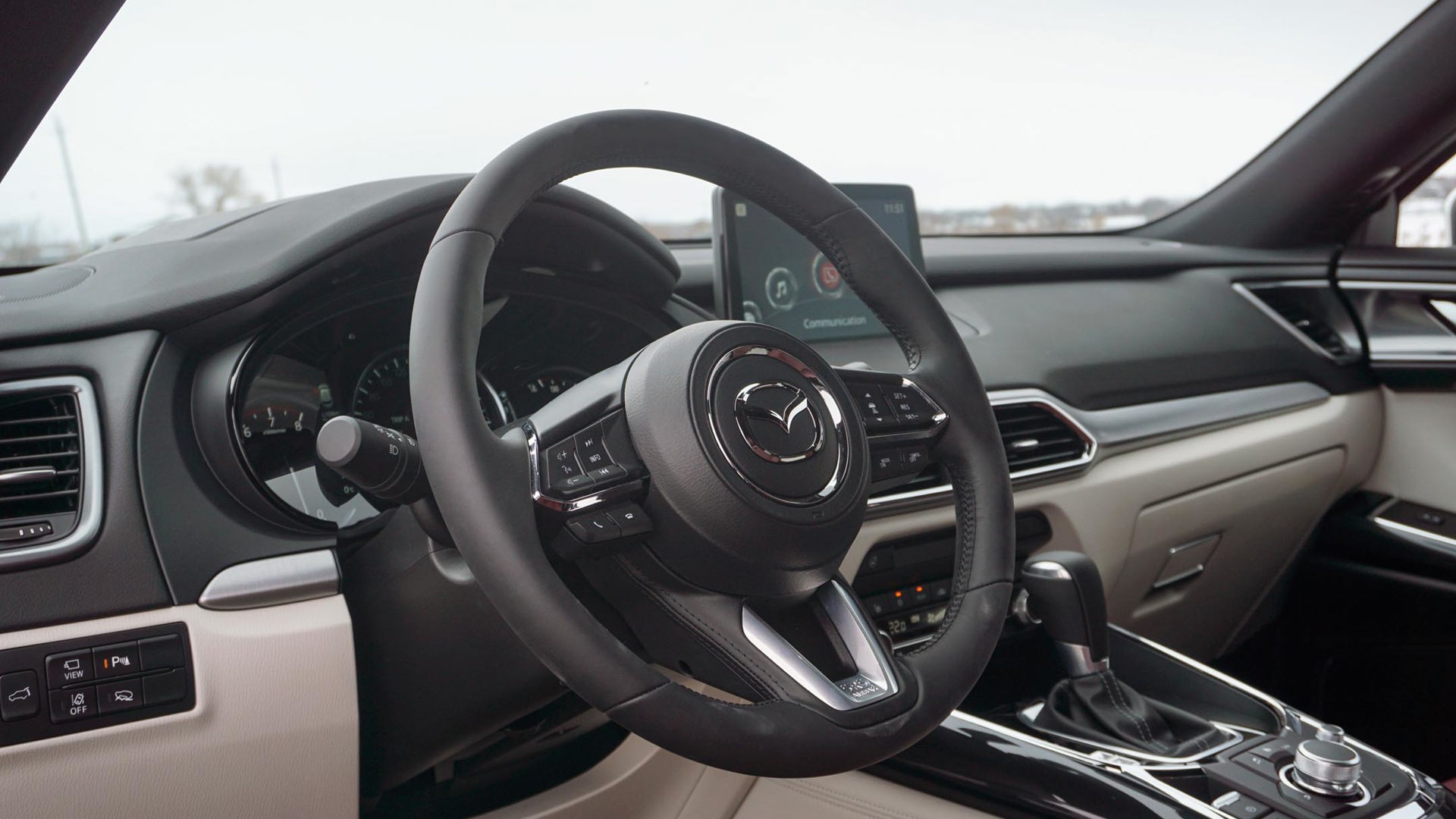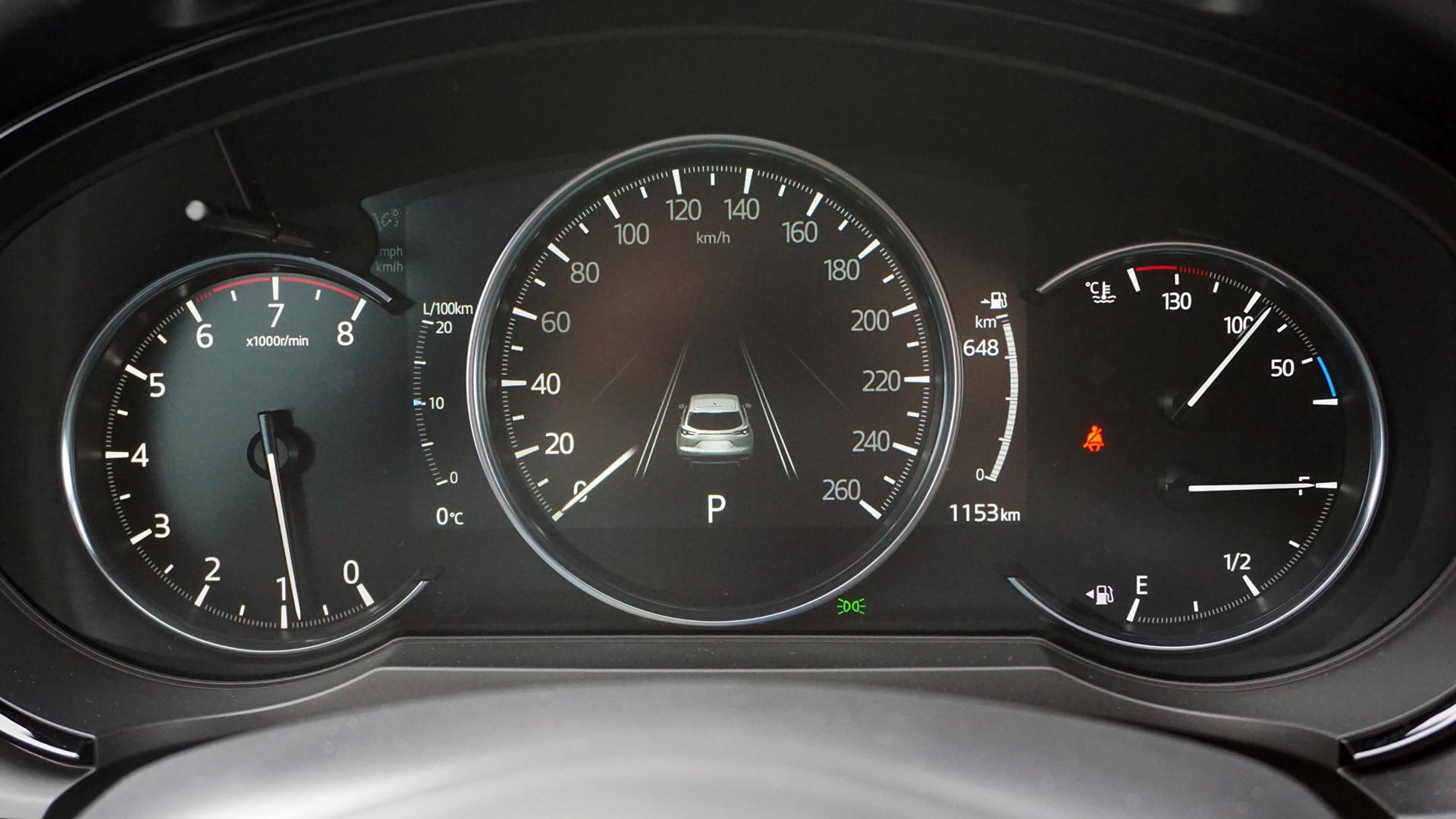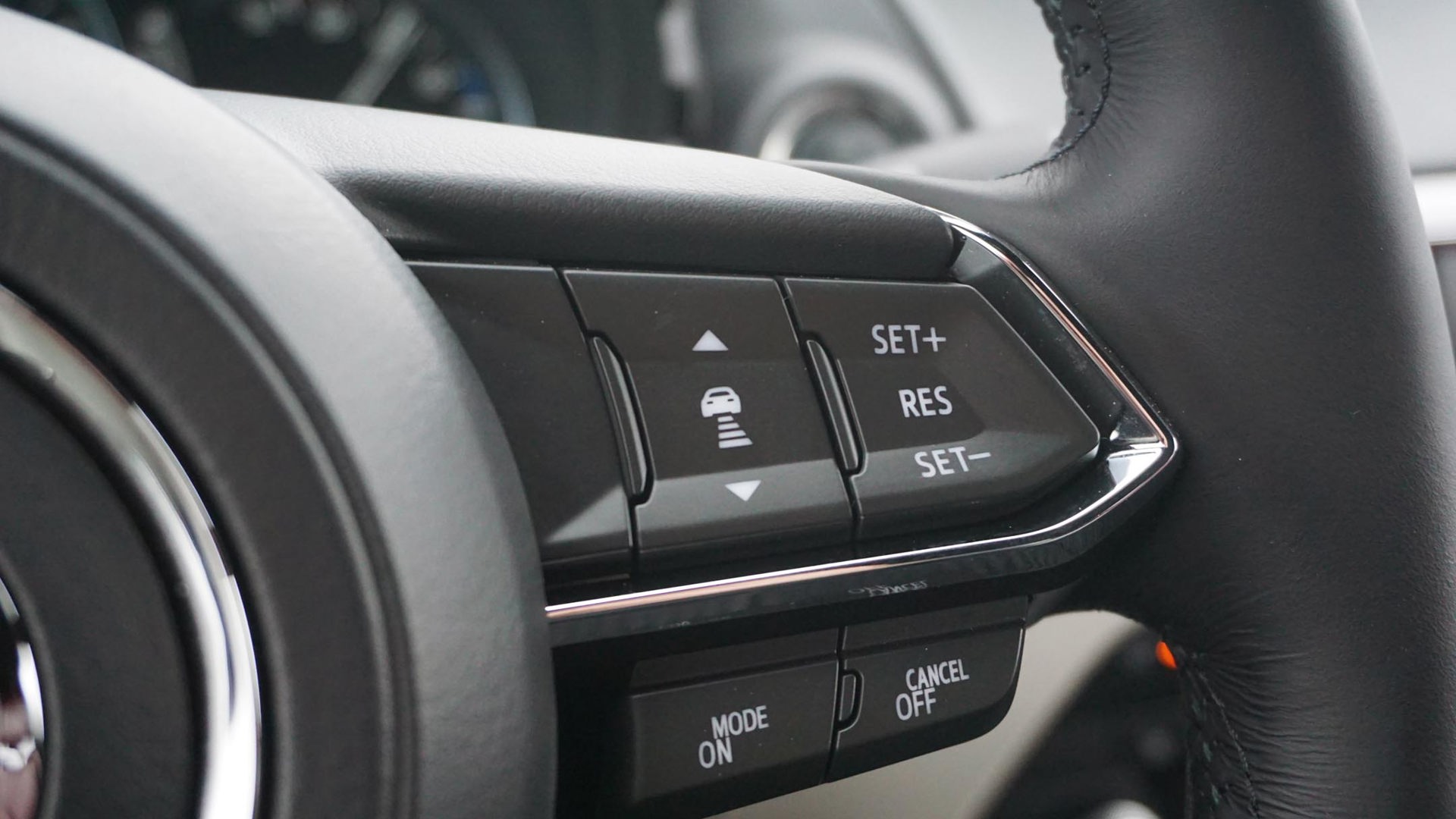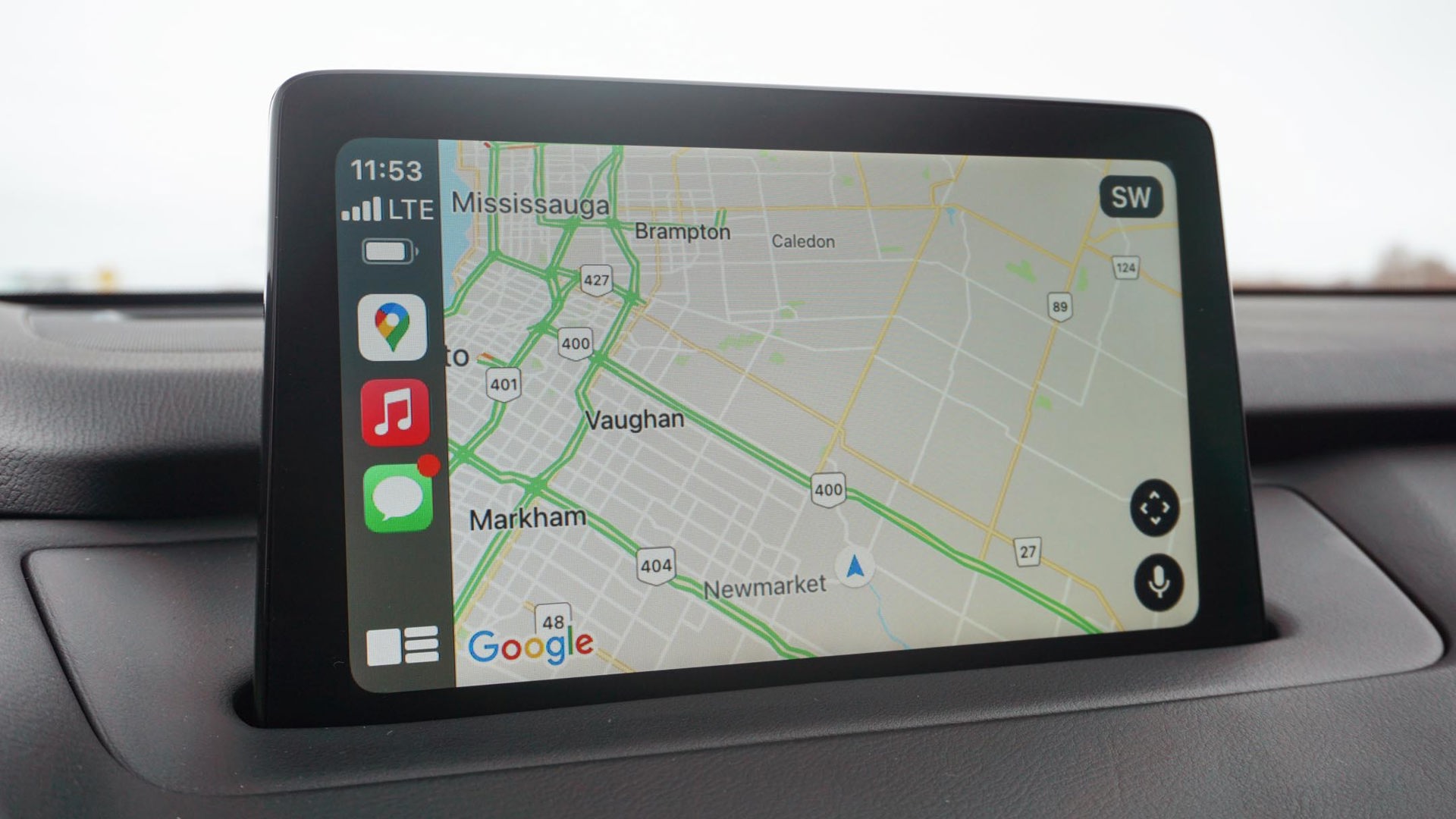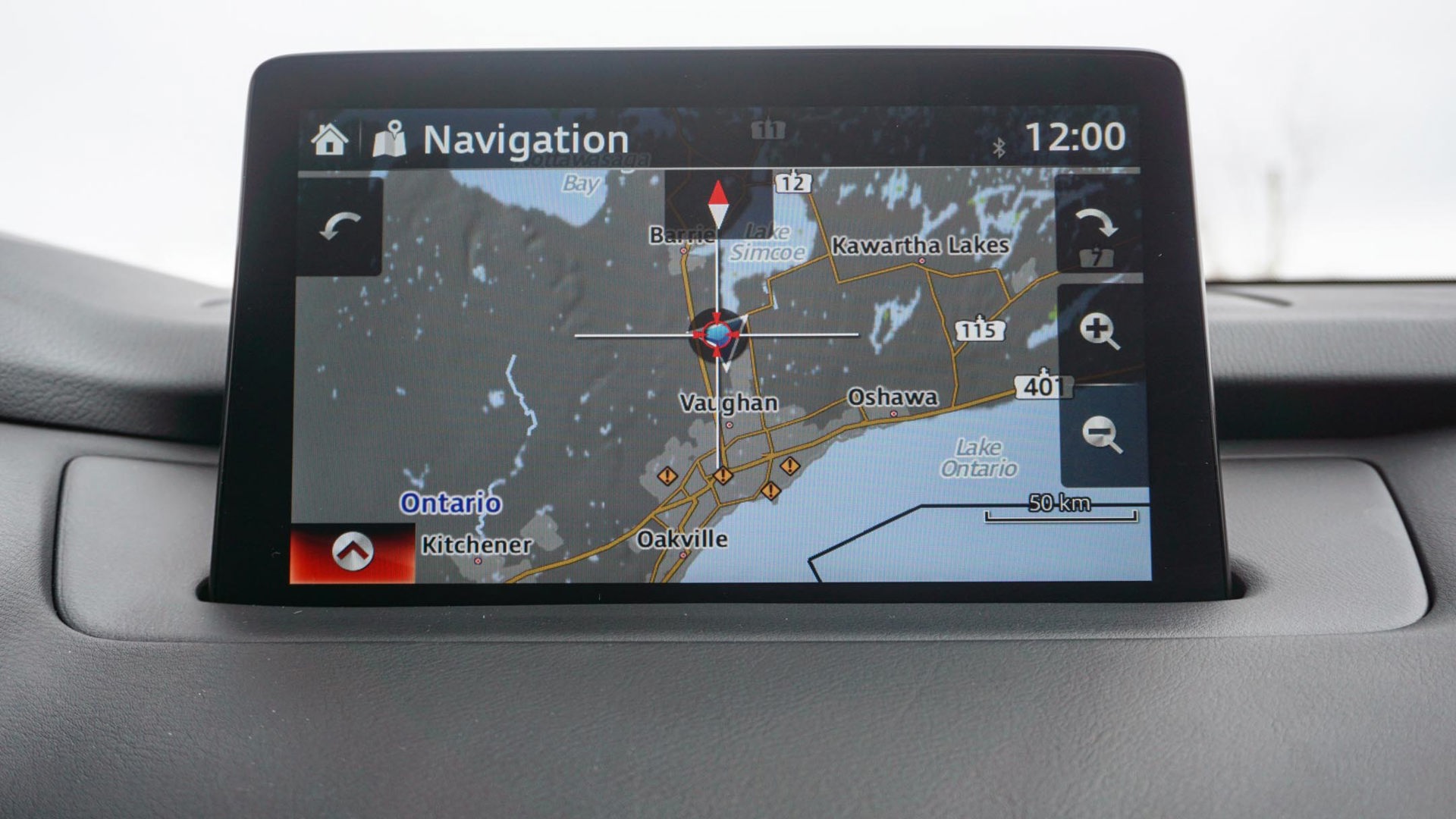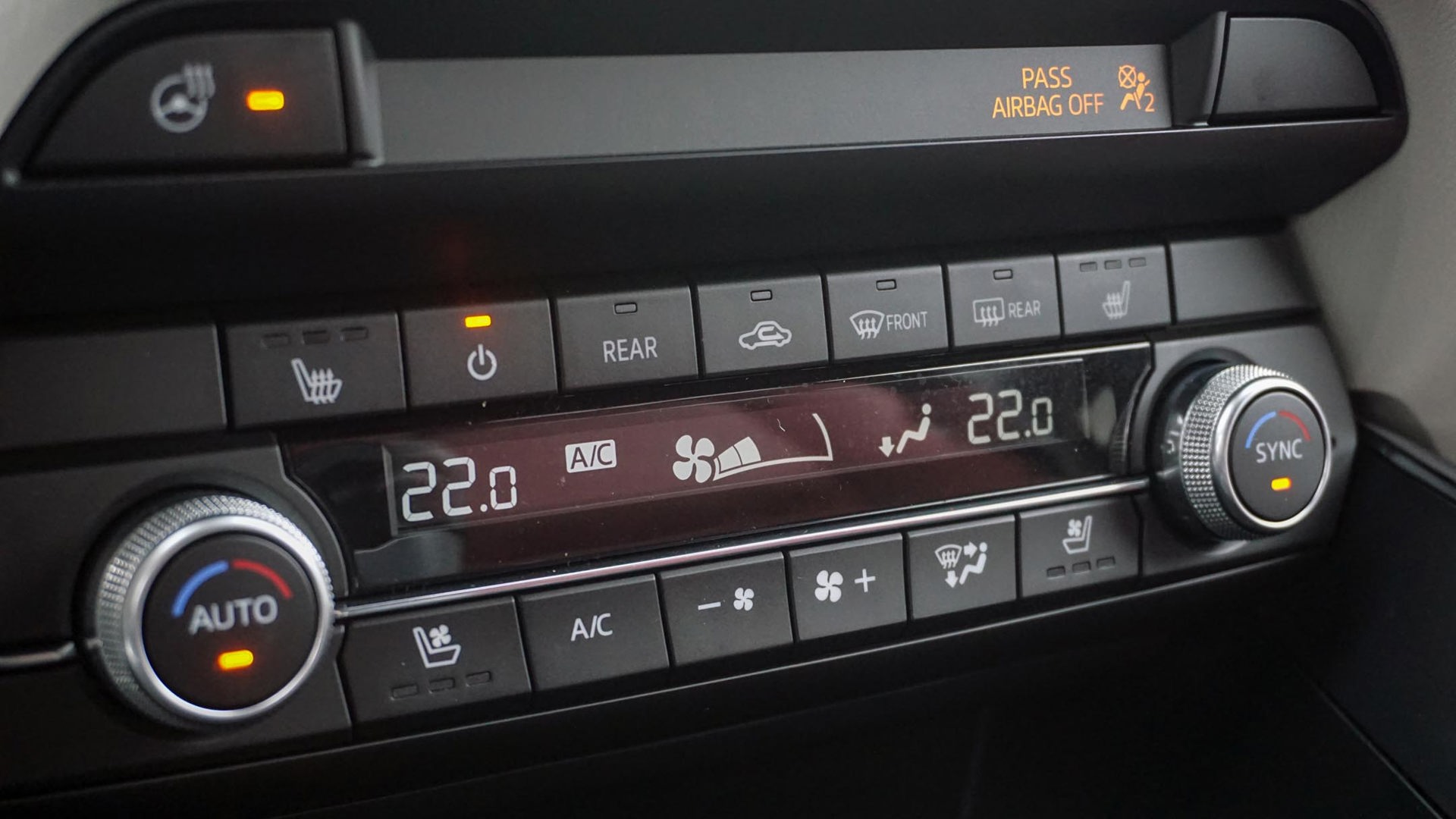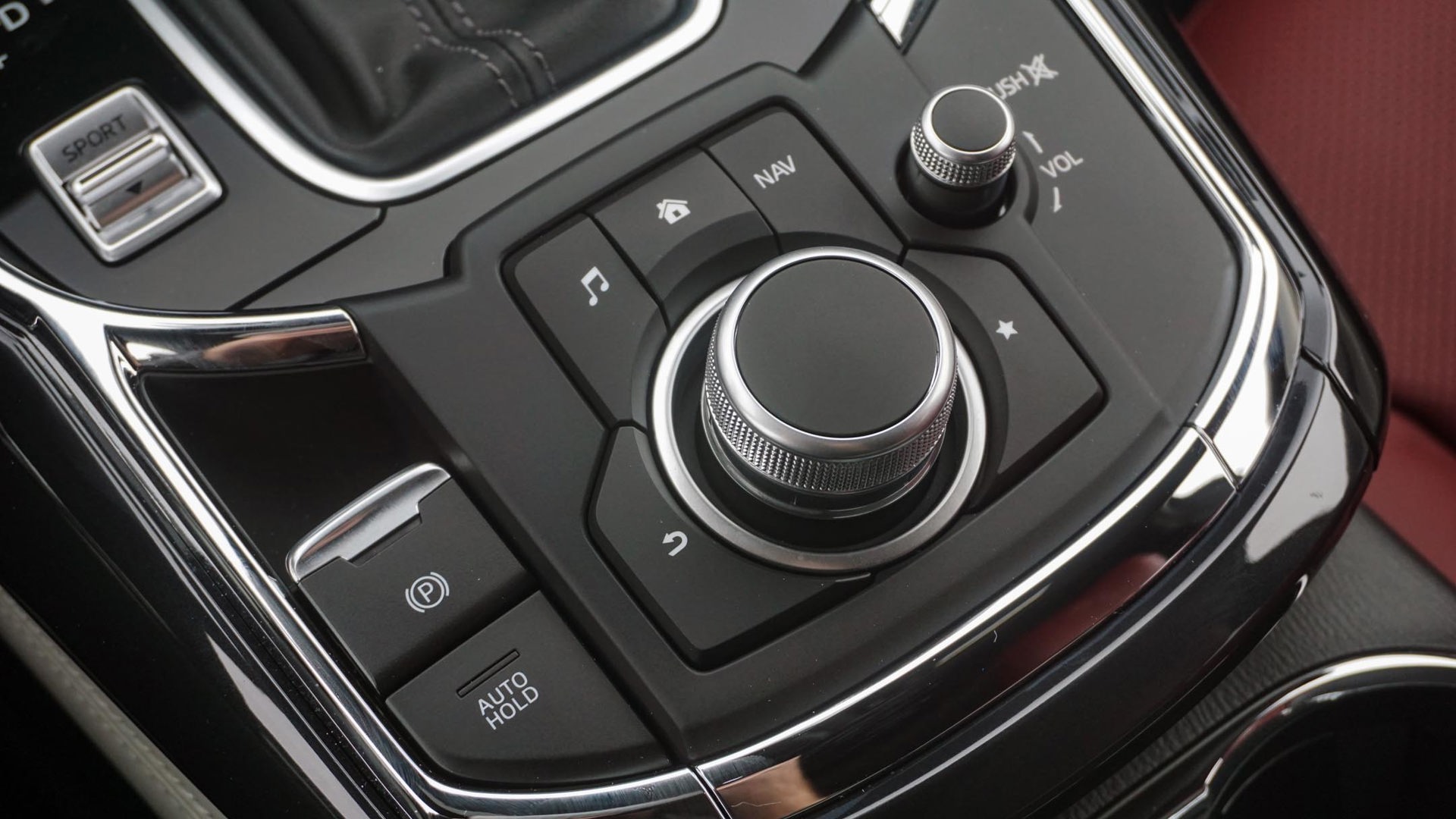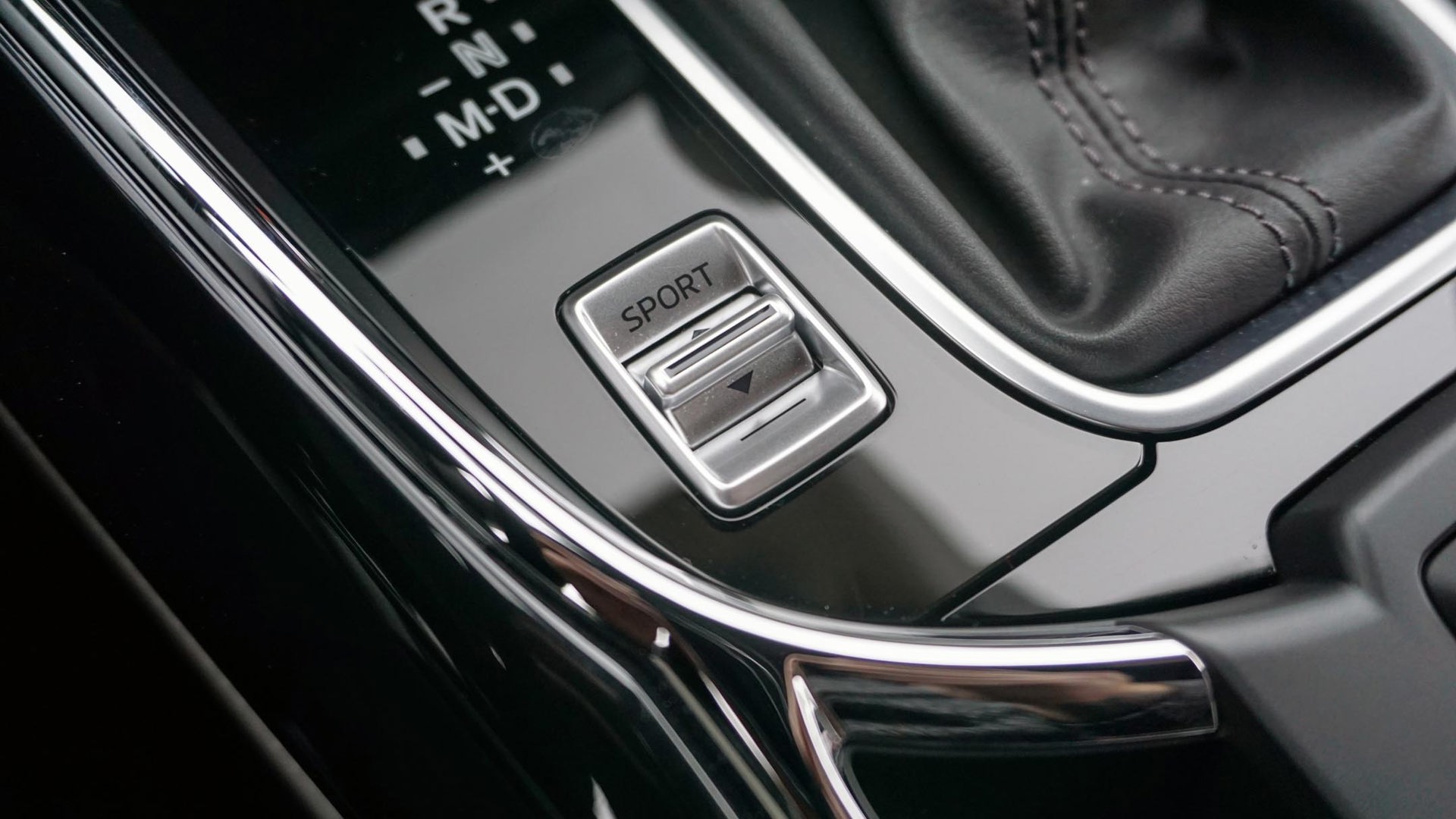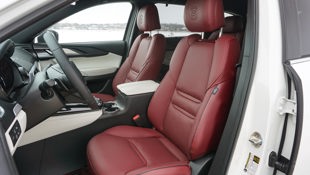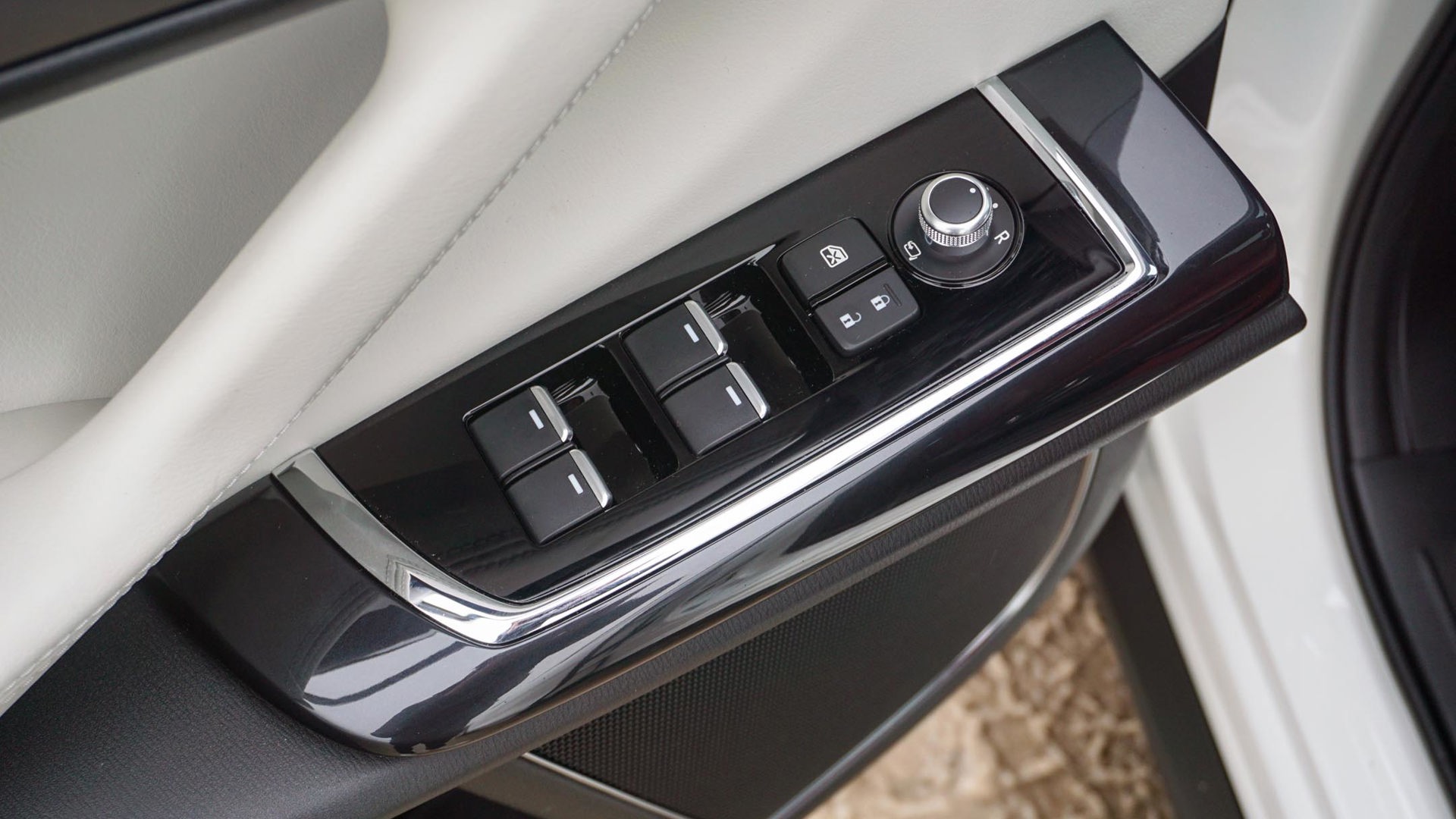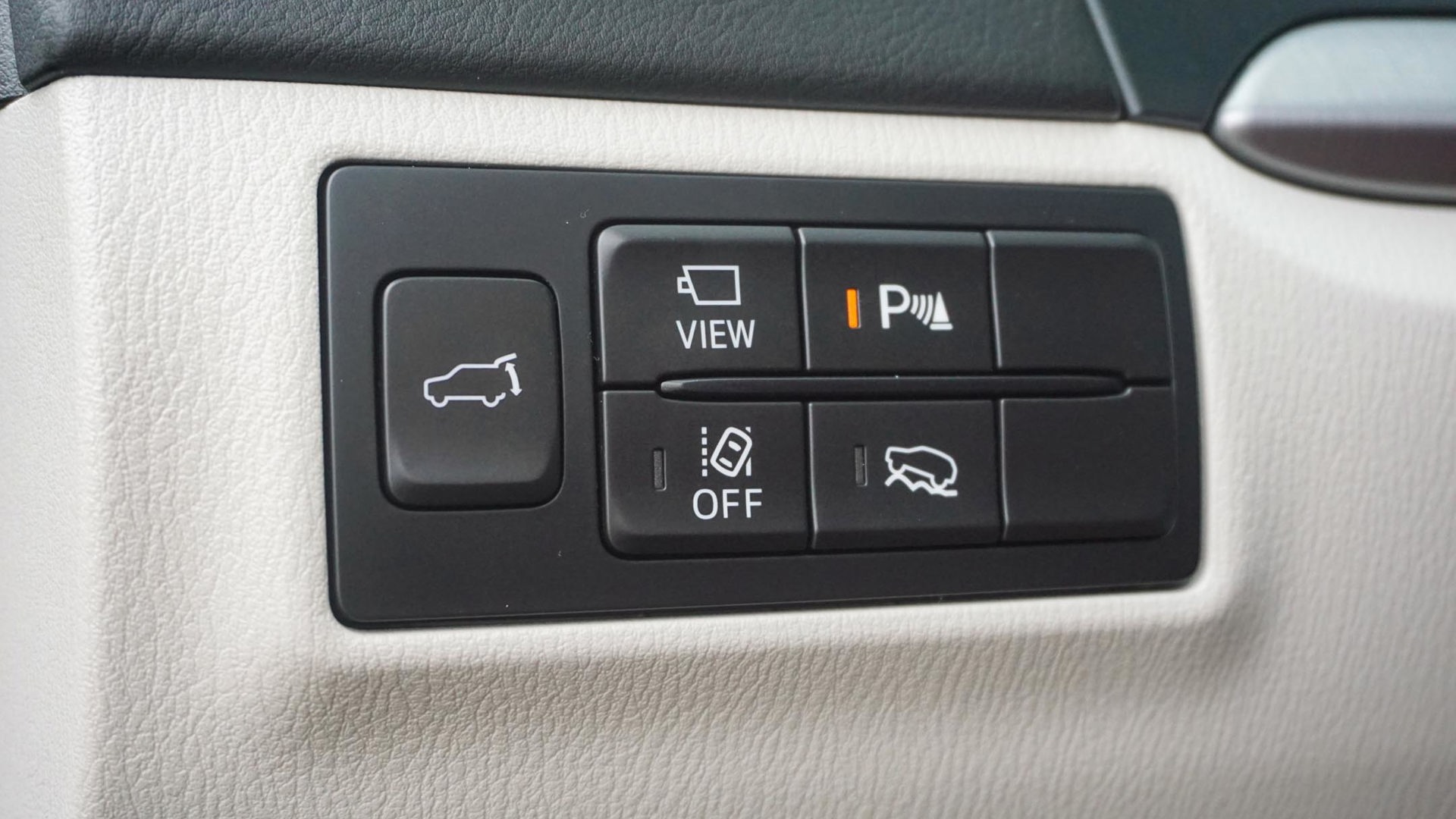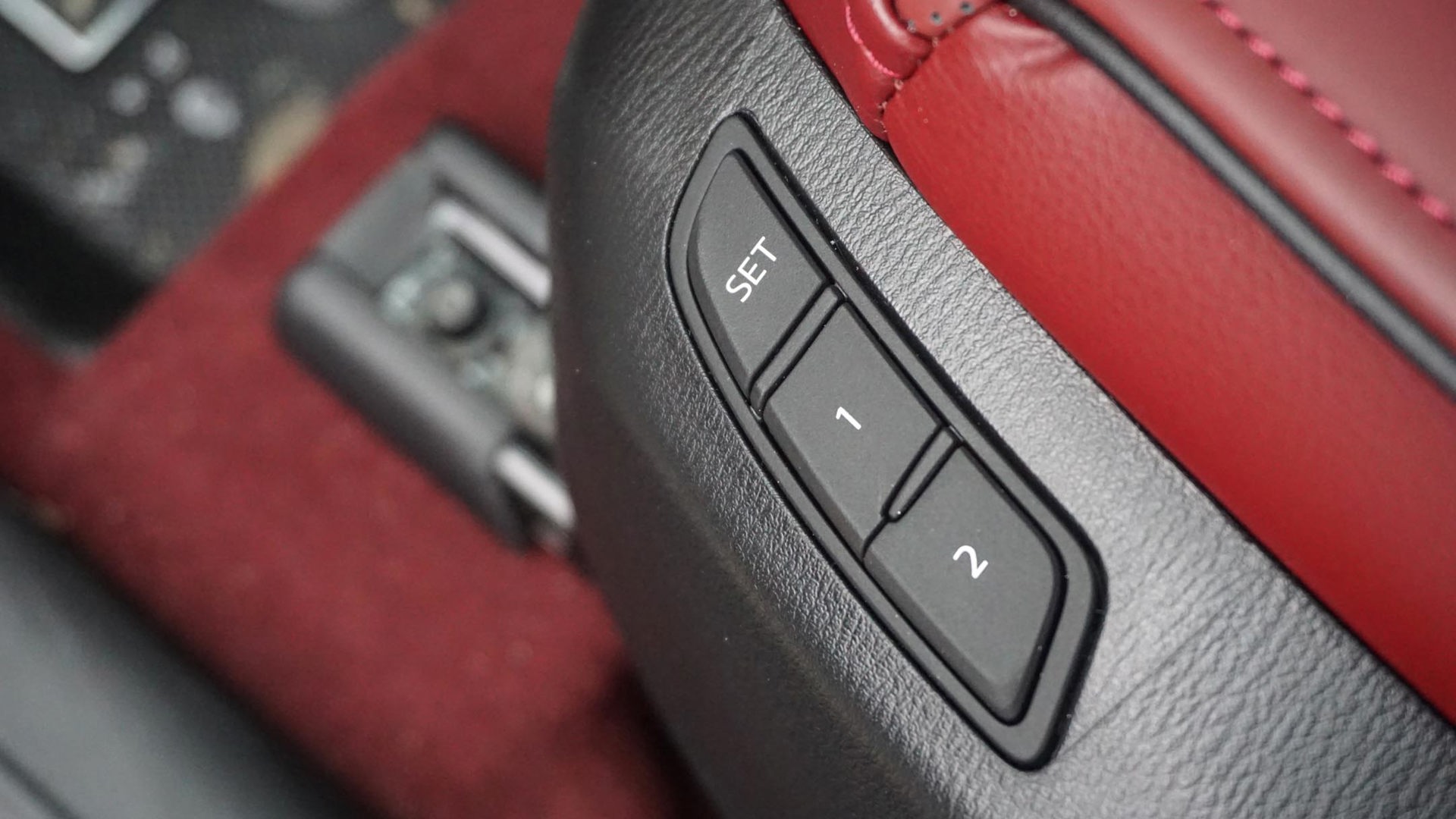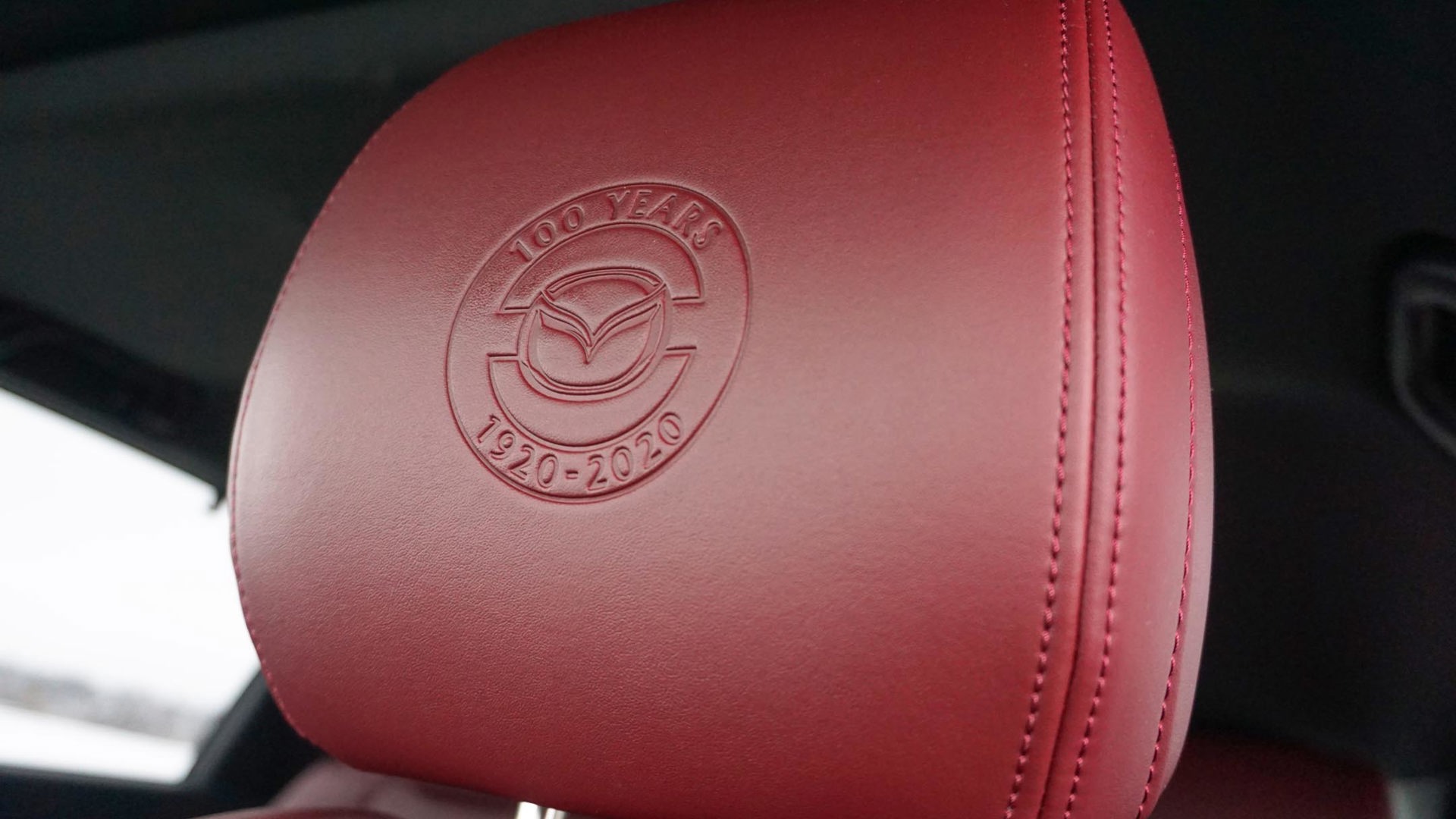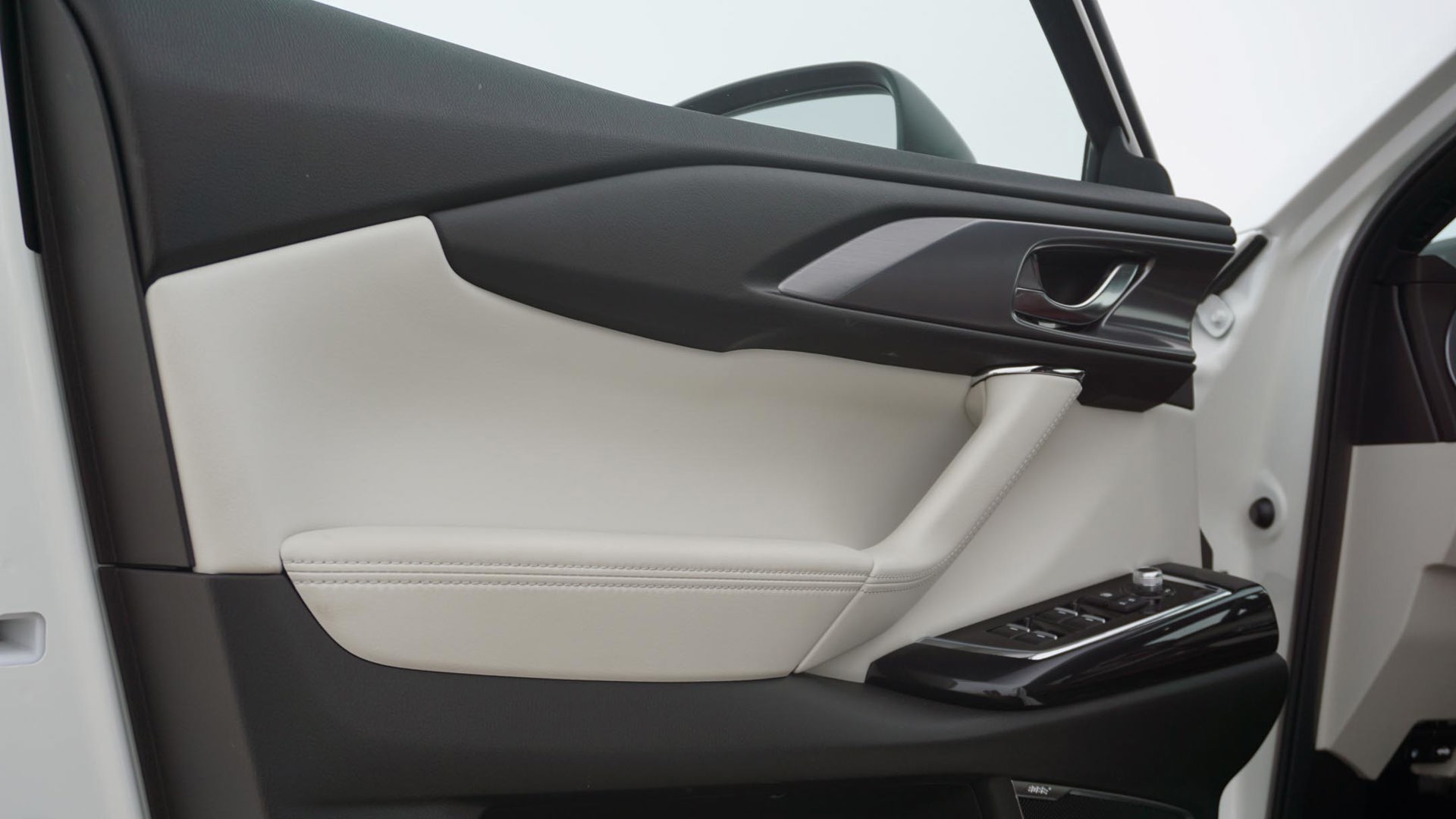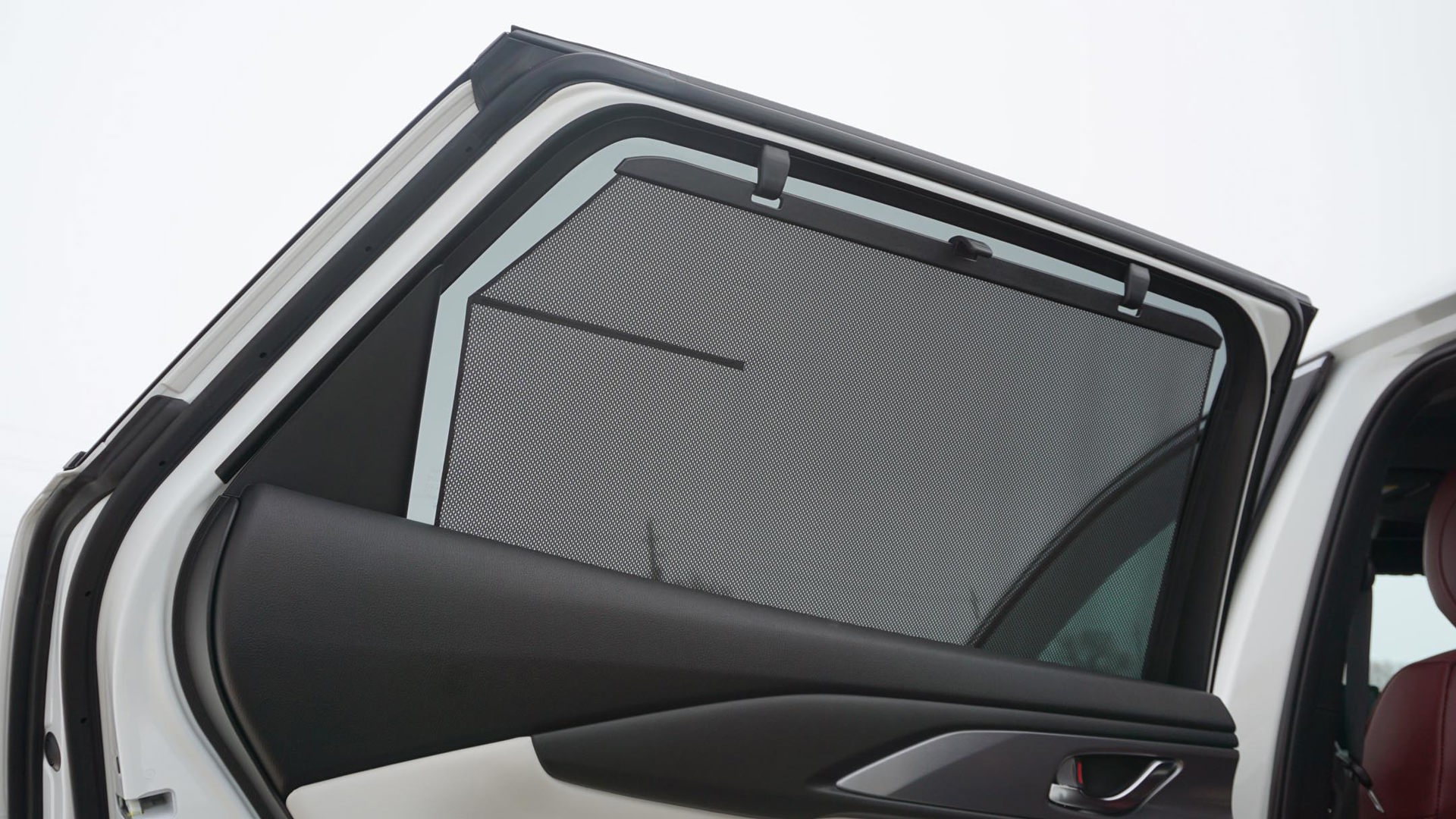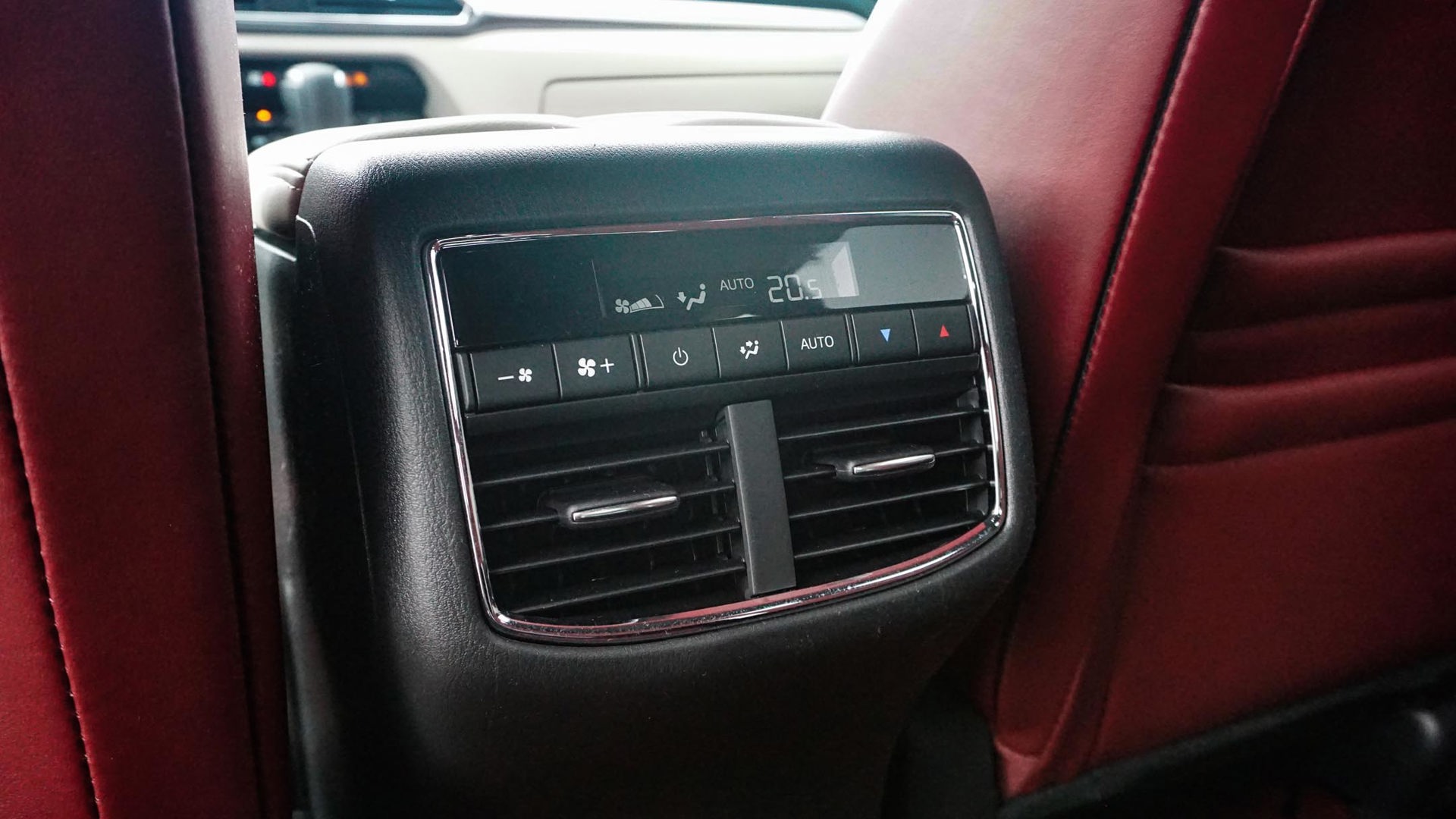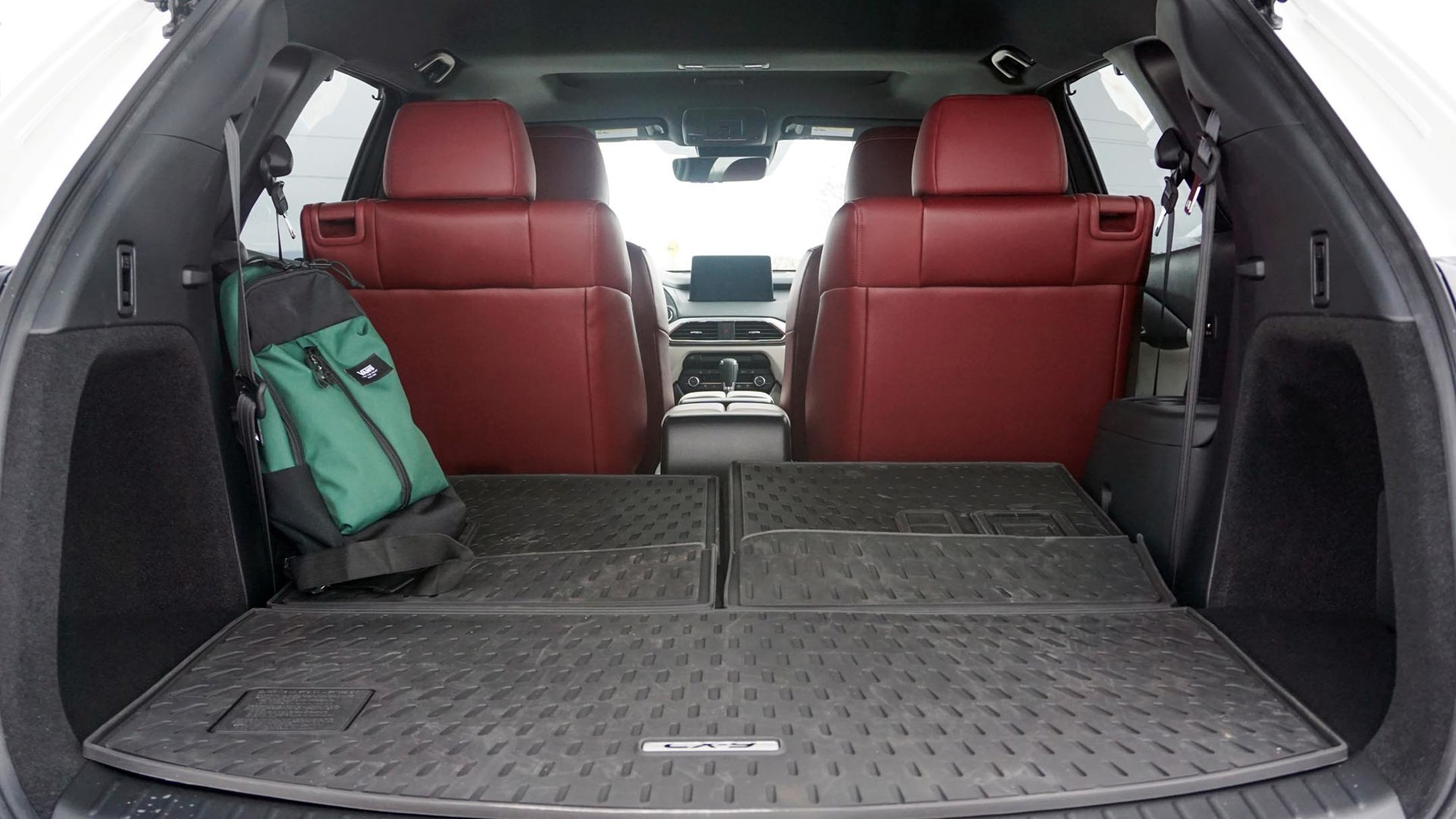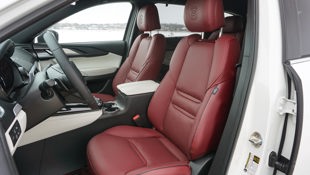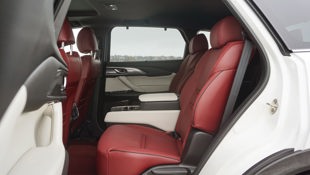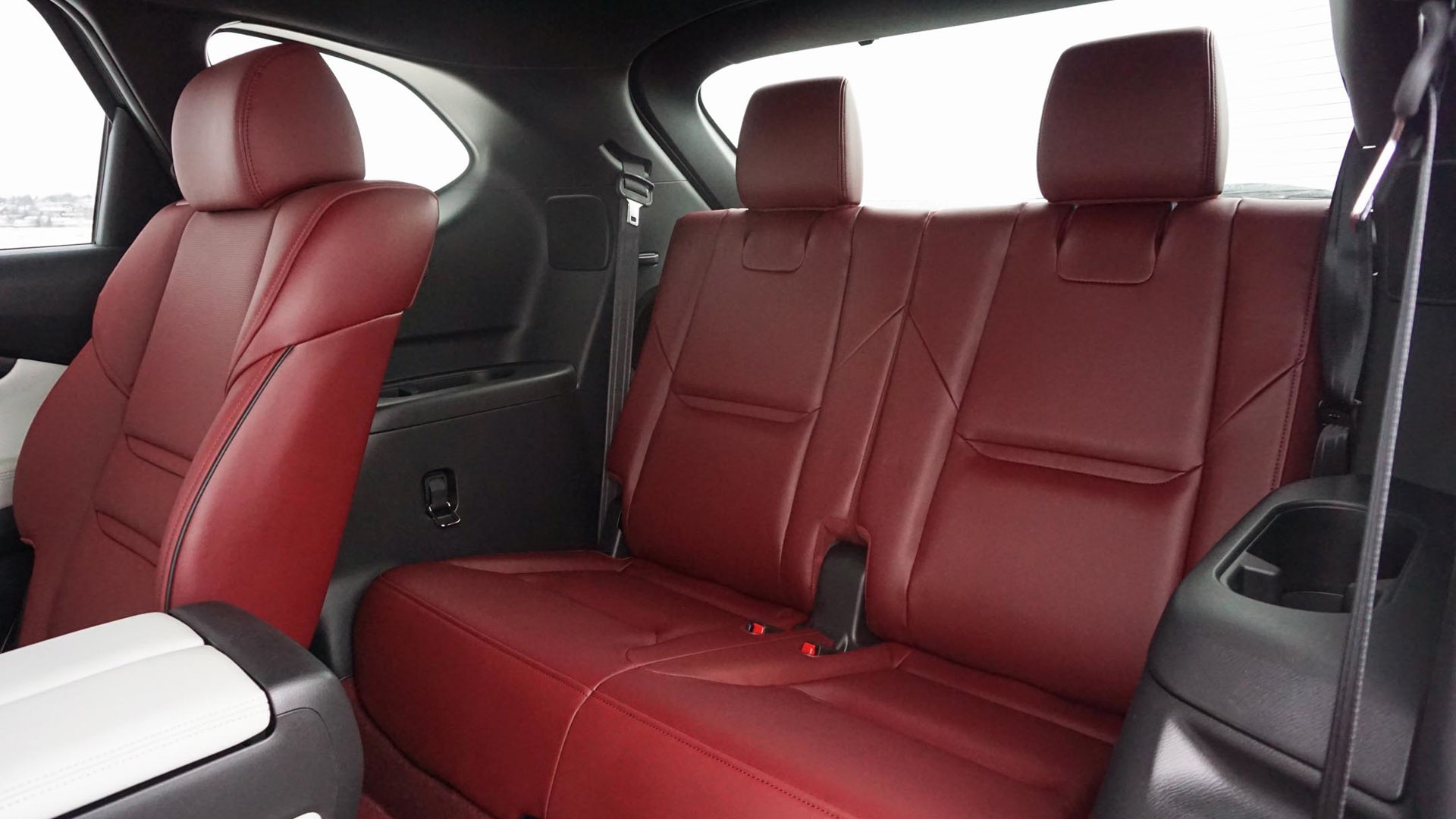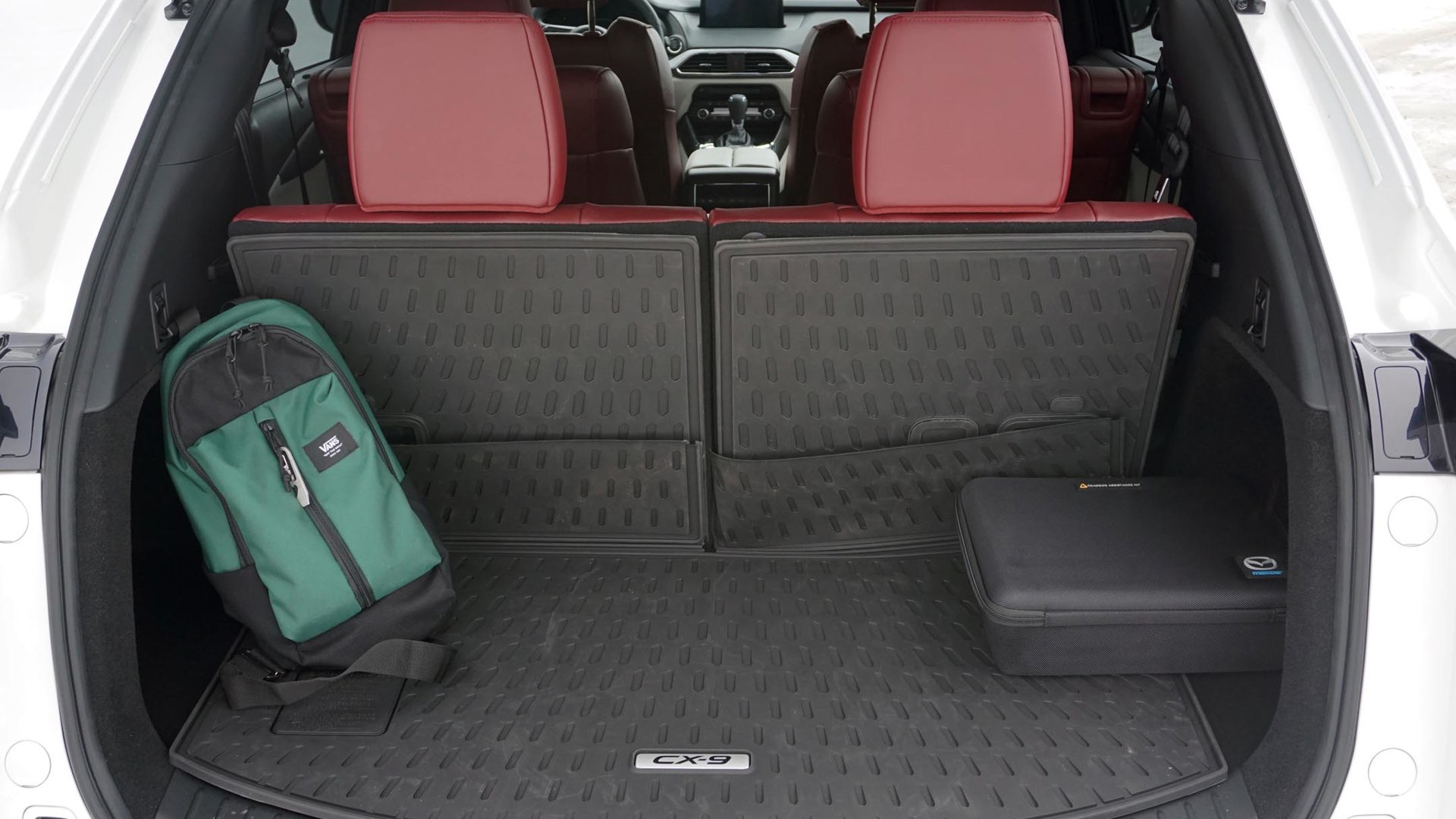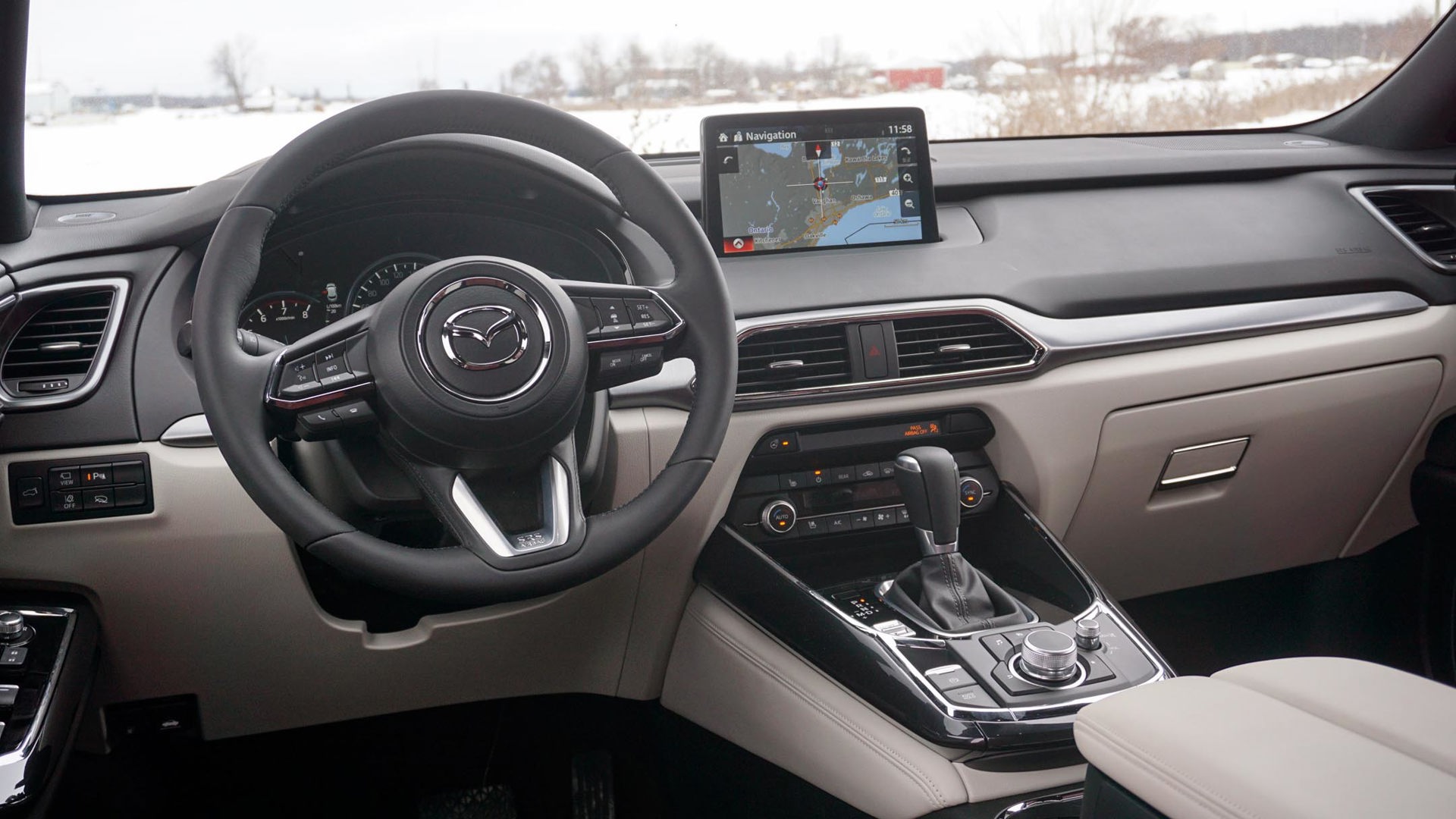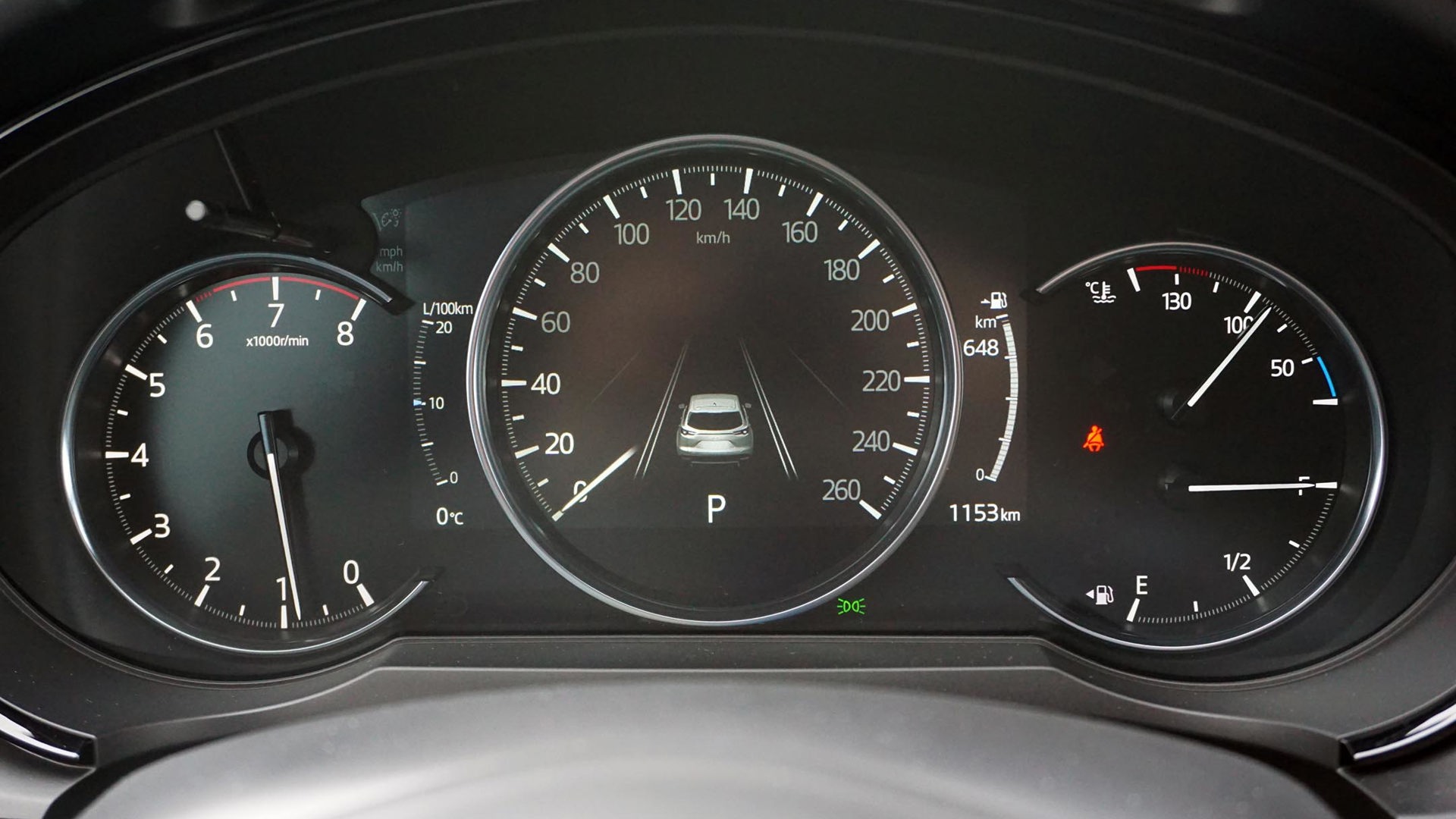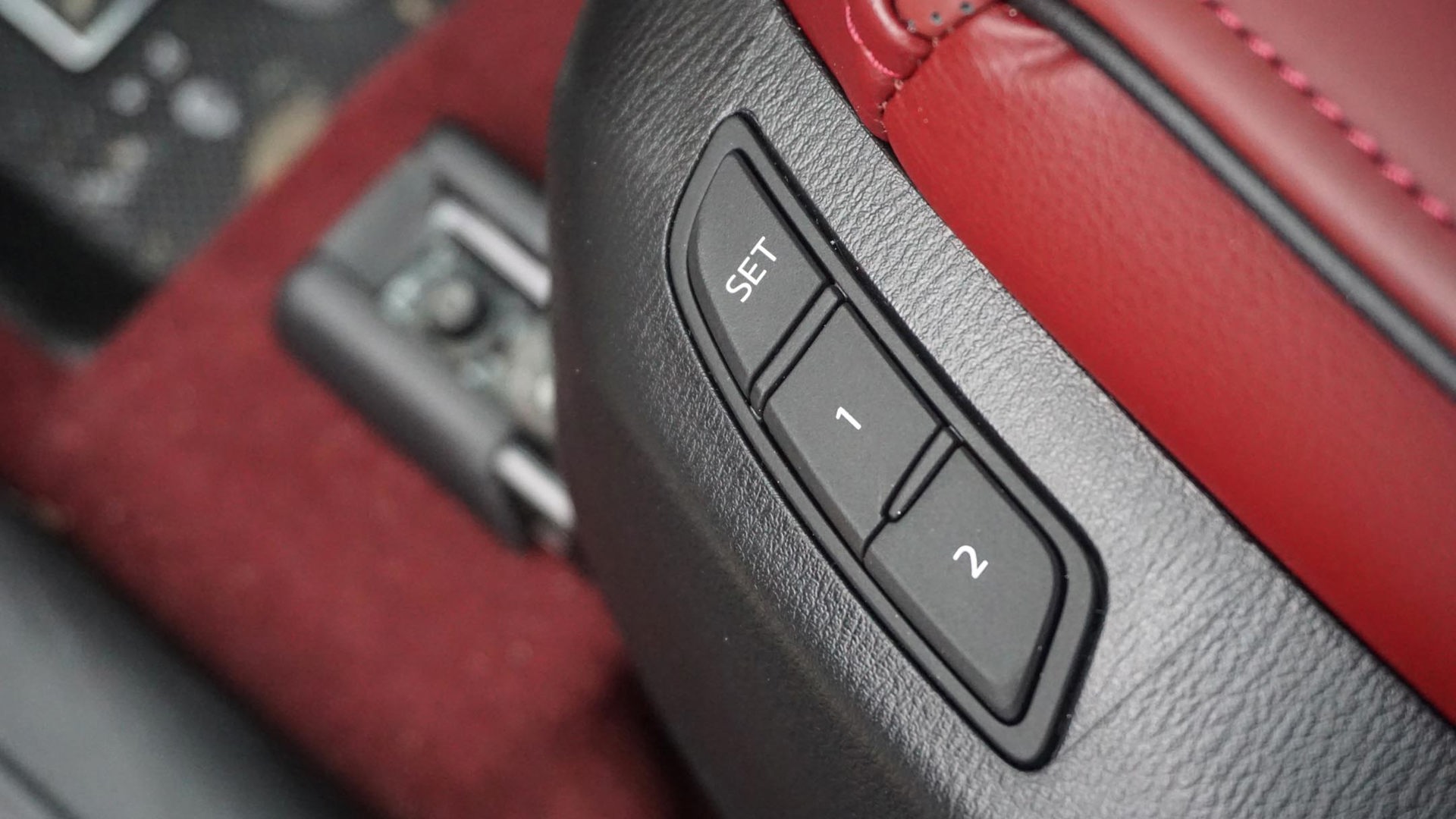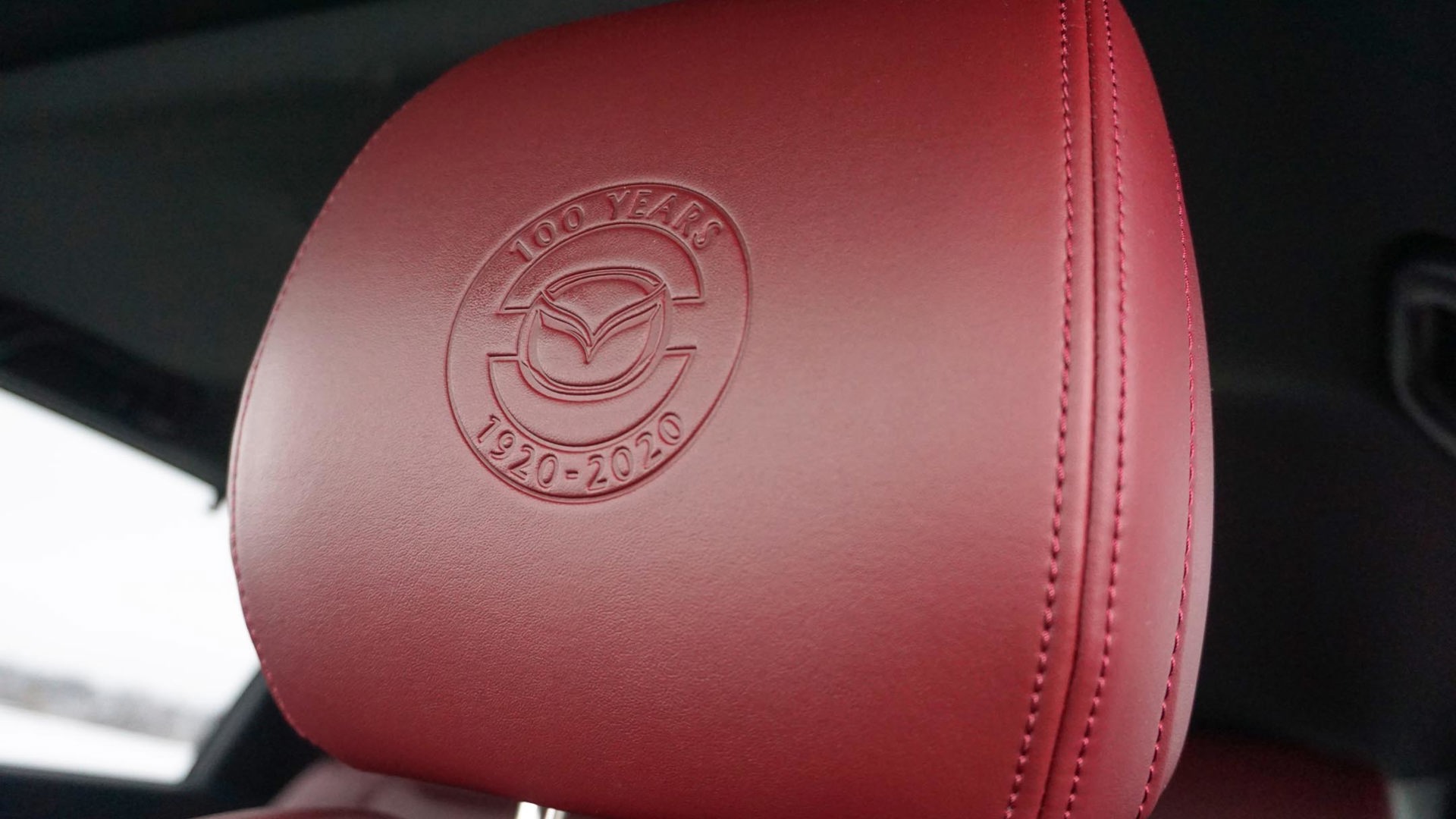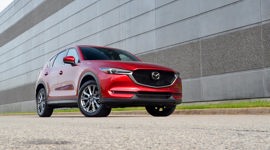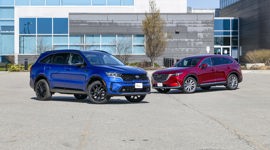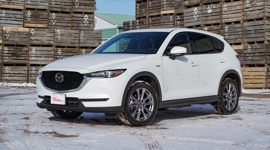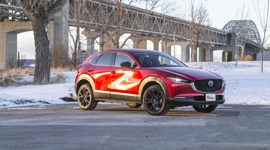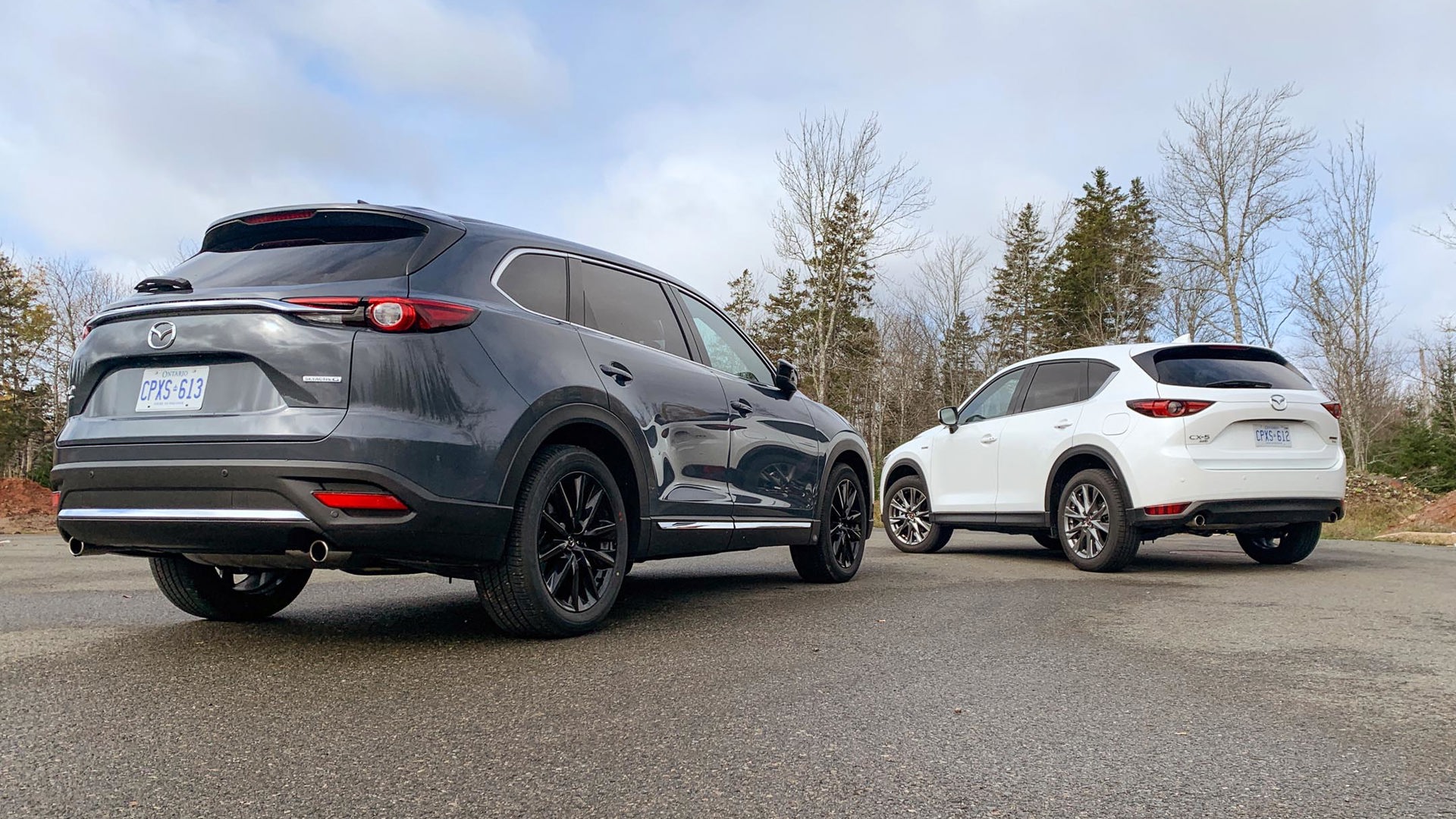 AutoTrader SCORE
AutoTrader SCORE
-
STYLING9/10
-
Safety9/10
-
PRACTICALITY7/10
-
USER-FRIENDLINESS7/10
-
FEATURES9/10
-
POWER7/10
-
COMFORT10/10
-
DRIVING FEEL8/10
-
FUEL ECONOMY8/10
-
VALUE9/10
With each passing year, it seems the gap between mainstream and premium products narrows evermore.
That’s especially true of three-row SUVs, with brands previously associated with cheap and cheerful churning out family haulers that wouldn’t be out of place in the poshest parts of town. The GMC Acadia Denali and Hyundai Palisade are but two examples of vehicles that can be kitted out to mostly keep up with big-money competitors from Mercedes-Benz and Lexus, among others.
Equally deserving of a spot on that list is the 2021 Mazda CX-9, a sport utility that lacks the outright size of its adversaries but delivers a specialness that sets it apart from the competition.
Features: 9/10
It’s not in every way that the CX-9 has what it takes to go up against a Lexus RX, or even in every trim. This is still a mainstream product, after all, and it must maintain a broader appeal as a result. However, it’s certainly not short of features – even in its thriftiest duds.
While plenty of entries in the segment start with front-wheel drive to keep their prices down, every version of the CX-9 sold in Canada comes with all-wheel traction. On top of that, there’s all kinds of good stuff like heated front seats, tri-zone automatic climate control, touchscreen infotainment with Apple CarPlay and Android Auto, 18-inch alloy wheels, and a whole host of advanced safety items including adaptive cruise control, lane-keep assist, and blind-spot monitoring, among others. And all that’s included for about $40,000 before fees and taxes.
Moving to the $43,600 GS-L trim sees the wheels grow to 20 inches all around, and bumps the infotainment display to a nine-inch unit (a seven-inch screen is standard). On top of that, it gets a power tailgate, leather upholstery throughout, a heated steering wheel and second-row seats, and the option to switch the configuration to captain’s chairs in the back for an extra $300.
The GT trim adds more safety items like a surround-view monitor, front and rear parking sensors, a head-up display (HUD), traffic-sign recognition, and reverse automatic braking for its $48,850 asking price. There’s also a kick sensor to open the tailgate, a 12-speaker stereo, a wireless phone charger and wireless Apple CarPlay connectivity, and ventilated front seats. Also offered is a Kuro Edition package that adds all kinds of black accents and a red leather interior for $50,150 before fees and the government’s share.
Finally, for $51,850 the CX-9 Signature adds niceties like quilted leather upholstery, as well as a few wooden interior accents, plus the ability to upgrade to the 100th Anniversary Edition package that makes this sport utility truly something special.
Styling: 9/10
The anniversary pack is a $1,500 homage to the automaker’s first-ever car, the R360, and it’s how to outfit the CX-9 with the funky interior seen here. Going beyond the red leather in the Kuro Edition, the cabin gets all kinds of off-white contrast accents and a red carpet throughout. While the latter is reminiscent of a 1980s Buick and might not age especially well, it’s unique at the very least and helps the already stylish CX-9 stand out.
This most-expensive CX-9 model ($53,350) is only offered in a pearl white finish, though it suits the sport utility’s flowing lines just fine. It’s not the best execution of the brand’s design language – that honour belongs to a car such as the MX-5 or Mazda6 – and looks a little bloated compared to something like the CX-5, yet it’s objectively more eye-catching than the average three-row SUV.
Practicality: 7/10
Maybe that’s because Mazda’s designers could be accused of prioritizing form over function. Whereas most models this size are boxy and upright, accentuating the space inside as a result, the CX-9 is sleek despite appearing somewhat bulbous. Take the Honda Pilot, for example; dimensionally, it’s not much different, stretching a similar length from bumper to bumper. Yet the big Honda is both wider and taller, resulting in far more usable space inside.
Its ability to carry cargo might well be this Mazda’s biggest shortcoming, with luggage volume that’s closer to that of a much smaller sport utility like the Toyota RAV4. In fact, according to the spec sheet there’s 1,082 L behind the second-row seats and 2,017 L with them folded, both of which are within a few dozen litres of that popular Toyota. By comparison, the Pilot boasts 1,583 L of space with its second row upright and more than 3,000 L with it stowed.
Once deployed, cargo room behind the CX-9’s rearmost seats shrinks to just 407 L – similar to that of the tiny Hyundai Venue subcompact crossover. The seats themselves aren’t especially roomy either, with your author unable to squeeze in the back with the second-row seats in place. While youngsters through their early adolescent years should do just fine during shorter trips, those seats truly are best reserved for emergency purposes only.
Perhaps, then, the best way to look at the CX-9 isn’t as a proper three-row SUV but as an oversized two-row that happens to have some extra seats in the back. When viewed through that lens – and fitted with captain’s chairs – this biggest Mazda model is a superb family hauler. There’s plenty of space for four people to stretch out, and tons of small-item storage with the full-size centre console between the back seats.
User Friendliness: 7/10
Climbing aboard this sport utility is made easy through four large doors that extend all the way to the bottoms of the rocker panels, protecting pant legs in the process. Unfortunately, reaching across the bulging back bumper to release the third-row seats has the opposite effect, with short handles to do so rather than straps like others in the segment such as the Subaru Ascent.
Front-seat headroom is more than adequate for those of various statures, though the seating position is slightly odd, with a sensation similar to that of sitting on a phonebook even with the driver’s seat in its lowest setting. There are a few minor hindrances to outward visibility, too, such as the thick A-pillars and large third-row headrests, but keeping a close eye on what’s happening outside is made easy thanks to those large doors and their large windows.
While the abundance of matte black plastic controls doesn’t come across as especially luxurious – it’s the same kind of stuff found in a $20,000 Mazda3 – all of it presents with outstanding clarity. The bank of climate controls is mounted a little low on the dash, but straightforward knobs and well-labelled buttons make the system easy to operate at a glance. The same goes for the logical layout of controls on the steering wheel for phone, audio, and adaptive cruise control, or the bank of buttons next to the driver’s left knee. It’s commonplace in the segment to stash switchgear there for the trunk release and other features, but the CX-9’s is easily accessible compared to entries like the Toyota Highlander that keep those buttons obscured from view.
For infotainment duty, the CX-9 employs a familiar – and often frustrating – set of console controls in addition to its touchscreen display. As part of Mazda’s approach to safety, the touchscreen is disabled while the vehicle is in motion, forcing users to rely on the buttons and dial on the console. (But hey, at least it has one to begin with, unlike the Mazda CX-30 that’s in desperate need of a touchscreen.)
The infotainment interface itself isn’t among the leading systems on the market, with a primitive look and feel to go with average responsiveness. While the newer CX-30 at least gets a more modern iteration of the automaker’s interface, the CX-9 relies on an older version that’s not as attractive or easy to use. The unit tested also rebooted itself on a few occasions, though the wireless CarPlay connection was all but seamless.
Safety: 9/10
Again, just how much safer a console-mounted controller is than a touchscreen is debatable, but Mazda’s efforts are commendable nonetheless. So, too, is the inclusion of all manner of advanced safety and driver-assist systems like adaptive cruise control that works in stop-and-go traffic, blind-spot monitoring, lane-departure warning and lane-keep assist, and automatic emergency braking with pedestrian detection.
With ever-more-stringent criteria to qualify for its awards, the Insurance Institute for Highway Safety (IIHS) named the Mazda CX-9 one of just five Top Safety Pick+ winners in the segment due to its performance in various crash and crash-avoidance tests. One area that could use improvement, however, is camera quality. Whether the government-mandated back-up camera or the front and side ones that make up this tester’s surround-view system, the poor resolution of the camera feeds makes them difficult to use, particularly in low-light conditions.
Driving Feel: 8/10
When it comes to more basic safety equipment, the brakes could stand to be a little firmer and bite earlier in the pedal travel, with every one of the CX-9’s 2,000 kg (4,409 lb) or so felt when trying to bring it to a halt in a hurry. The experience isn’t quite unnerving, but it’s close. It also lacks the sharp steering feel Mazda has long been known for, with a setup that’s light even by large SUV standards. And just like during braking, all of its mass becomes apparent when cornering. It’s not that there’s much body roll to contend with, but it lacks the buttoned-down mannerisms of most Mazda products – including other, smaller SUVs.
Comfort: 10/10
Surely the winter tires worn by this tester didn’t help, contributing a kind of squishiness to the drive. It also might be a by-product of the suspension setup that’s simply outstanding, and if so it’s a trade-off that’s worth making.
With your author spending the two weeks prior to this evaluation with the Genesis GV80 and its computer-controlled suspension, the CX-9 proved itself an astonishingly composed cruiser. Whatever witchcraft the automaker is employing, it would do well to bottle it up and sell it to proper premium brands – it’s that good.
That the CX-9 rides on a conventional system that employs old-fashioned shocks and springs rather than air suspension or adaptive dampers makes the quality of its ride that much more impressive, the family hauler floating down the road with an incredible smoothness.
Further adding to the ambiance of its upscale drive is the active noise cancellation system that keeps outside interference to a minimum, and the upgraded leather seats that provide ample support for long drives. The second-row captain’s chairs are comfy, too, and feature steep recline functionality – however, the pivot point is rather high in order for them to fold flat for more cargo room, protruding awkwardly into adult occupants’ lower backs as a result.
Power: 7/10
If there was one area besides the plastic controls that betray the near-premium experience provided by the CX-9 it’s what’s under the hood. While others in this space rely on smooth and refined V6 engines for power generation, the only one offered here is a turbocharged four-cylinder that at times strains to move the mass of such a large vehicle. Displacing 2.5L, the motor is more than adequate in every other application – and there are a lot of them, as Mazda will put this into just about everything it fits – but it protests loudly when prodded here, the CX-9’s extra weight an obvious burden.
Mated to the motor is a six-speed automatic transmission that’s buttery smooth, sending torque to the all-wheel drive system that’s fully automatic; there are no settings to adjust, and it shuffles torque around all on its own. As a whole, the powertrain is decent, with appropriate throttle response and impressive output (with peaks of 250 hp and 320 lb-ft of torque, it’s among the most stout four-cylinders offered in an SUV like this). It’s only the way it strains itself while working that misses the mark as far as providing a near-premium experience is concerned.
Fuel Economy: 8/10
The trade-off to a turbo engine like this in place of a larger-displacement one is the fuel consumption it returns. Despite its overall size, the CX-9 is officially rated to burn a combined average of 10.5 L/100 km – a number that was virtually matched during testing. The CX-9 can also be run on less-expensive fuel without much penalty. While it calls for pricey 93-octane to make those peak engine output numbers, putting regular-grade gas in the tank sees them drop just to 227 hp and 310 lb-ft of torque.
Value: 9/10
Pricing is also among the CX-9’s strengths – particularly at the top of the lineup. This 100th Anniversary Edition tester that comes fully loaded with all the stuff from the Signature model but adds the standout interior finishes is $53,350 before freight and taxes, which undercuts most top-of-the-line competitors by at least a little. The Hyundai Palisade and its new Ultimate Calligraphy trim, for example, is $54,699, while the gas-powered Toyota Highlander Platinum is $54,450. Even the GMC Acadia Denali is priced at $53,998, and that’s before options including its fantastic adaptive suspension.
The Verdict
Something the Mazda CX-9 lacks compared to all three of those rivals – and several more fighting in this near-premium space – is a V6, and that shortcoming is hard to ignore in terms of the premium refinement it would surely bring to the engine bay. But there are plenty of other ways it makes the absence forgivable, the least of which is its competitive pricing. The ride quality is fantastic and, maybe more than anything else, the experience it provides is simply so special.
It doesn’t have everything it takes to go head-to-head with a proper premium SUV like the Genesis GV80 or Lexus RX, but for all the money it saves the Mazda CX-9 sure does a great impersonation of one.
| Engine Displacement | 2.5L |
|---|---|
| Engine Cylinders | Turbo I4 |
| Peak Horsepower | 250 hp @ 5,000 rpm |
| Peak Torque | 320 lb-ft @ 2,500 rpm |
| Fuel Economy | 11.6 / 9.1 / 10.5 L/100 km cty/hwy/cmb |
| Cargo Space | 407 / 1,082 / 2,017 L behind 3rd/2nd/1st row |
| Model Tested | 2021 Mazda CX-9 100th Anniversary Edition |
| Base Price | $53,350 |
| A/C Tax | $100 |
| Destination Fee | $1,950 |
| Price as Tested | $55,400 |
|
Optional Equipment
None
|
|
